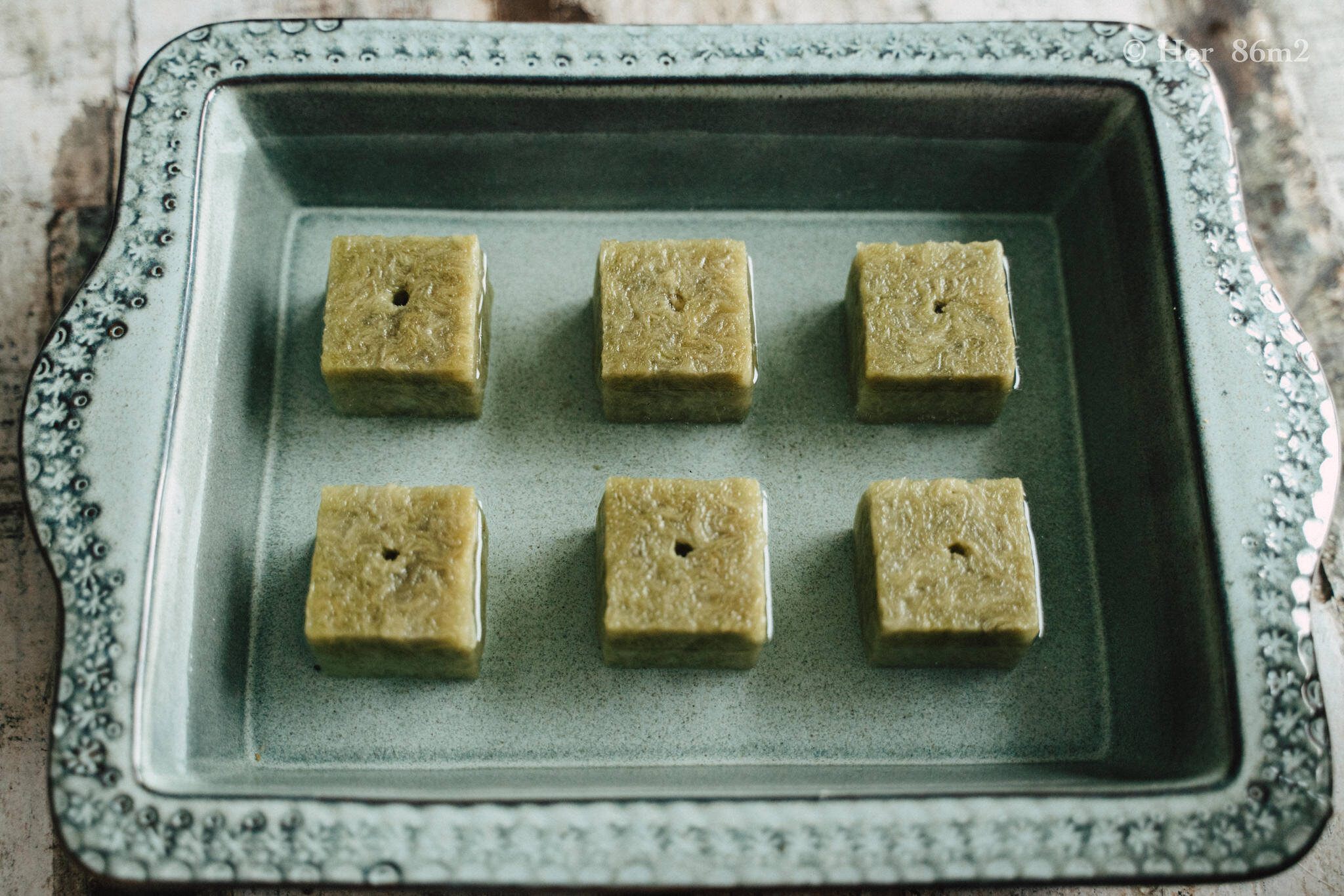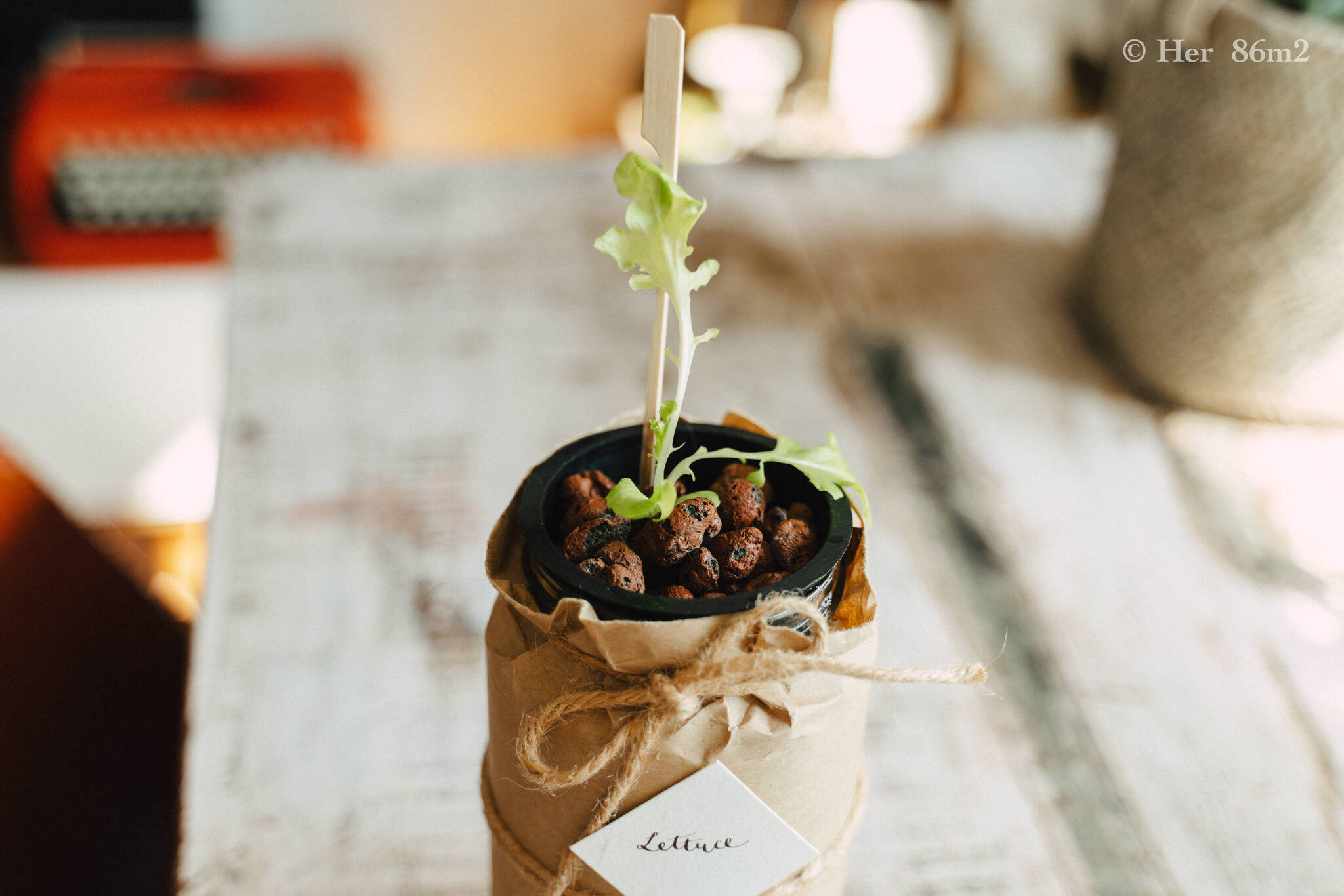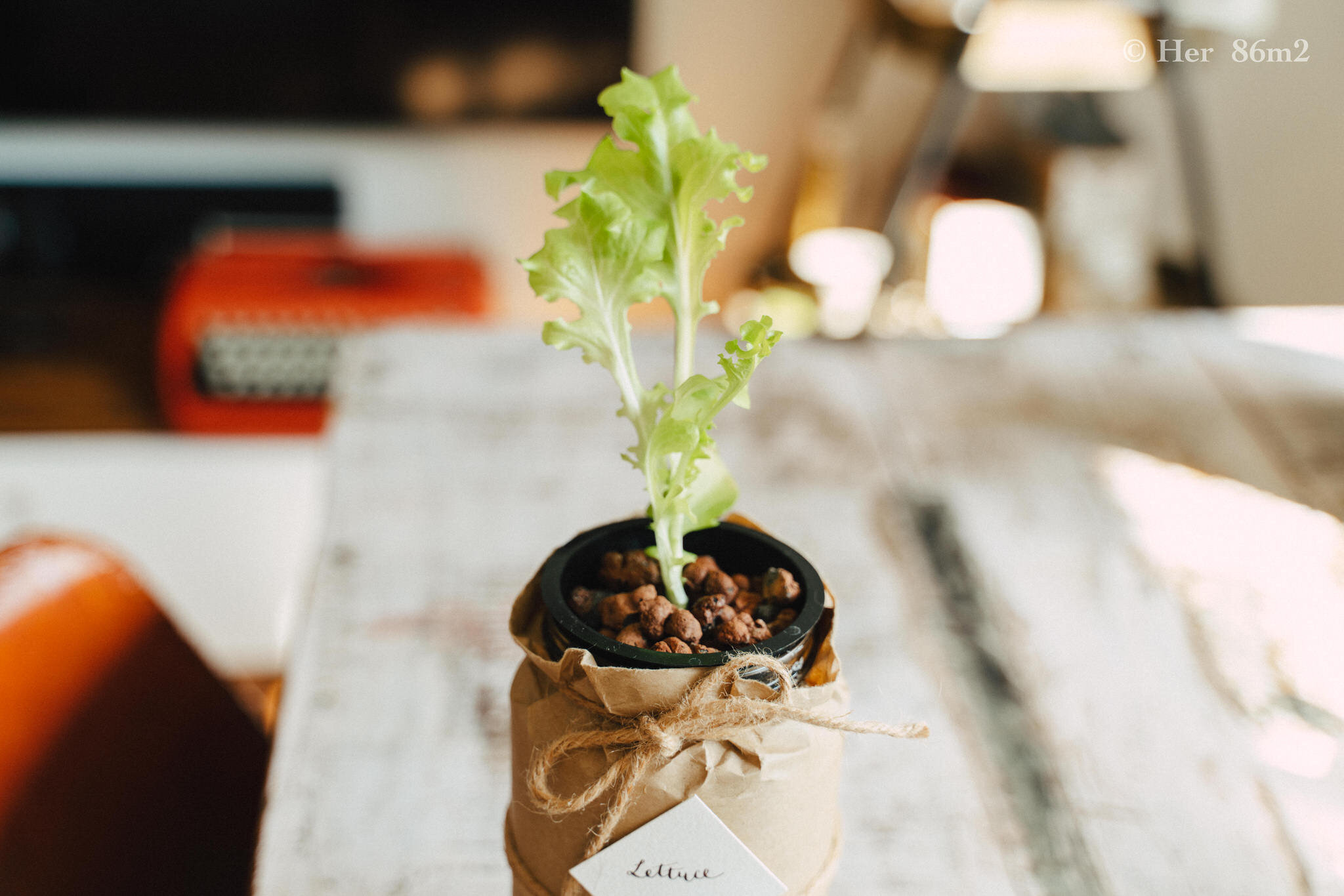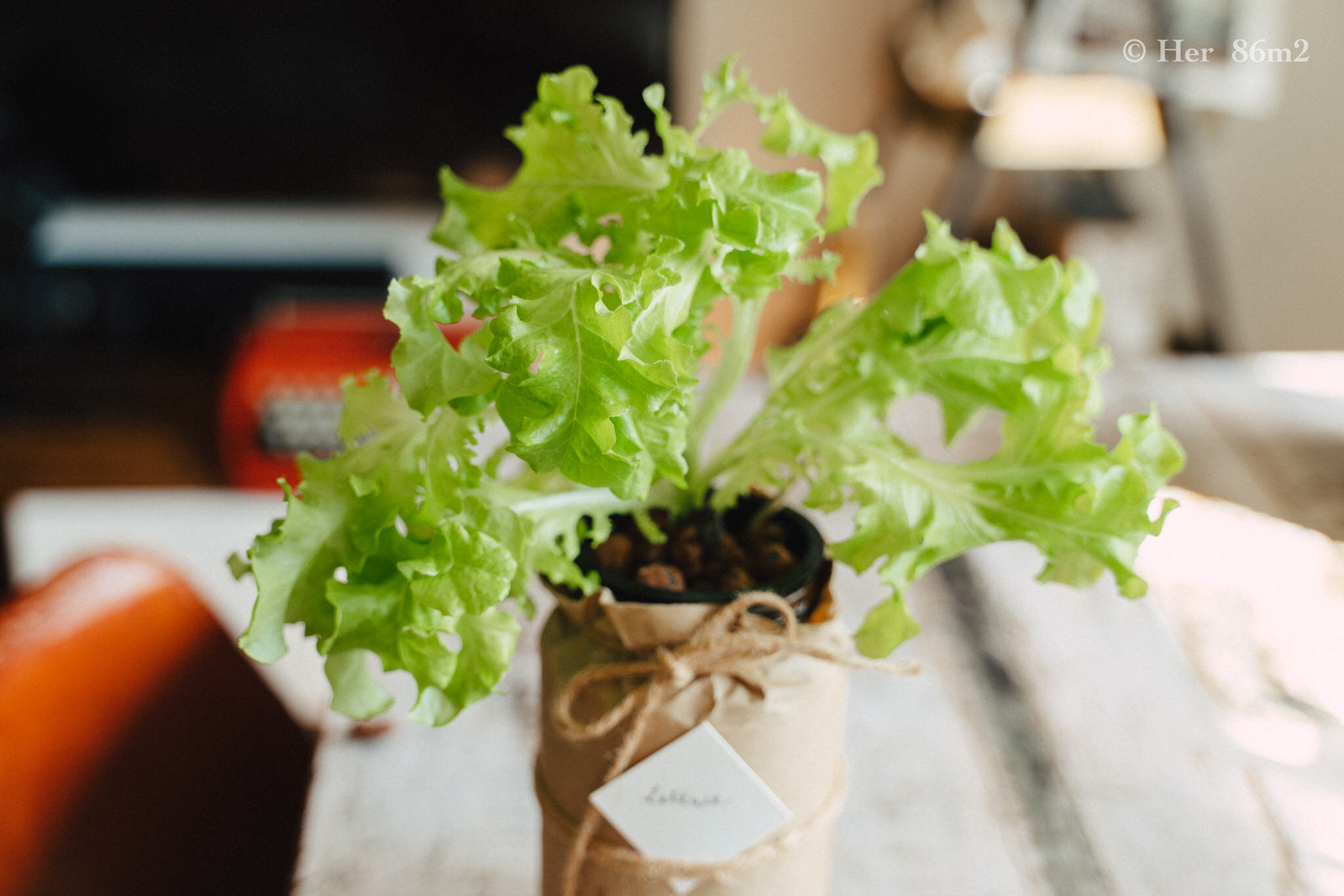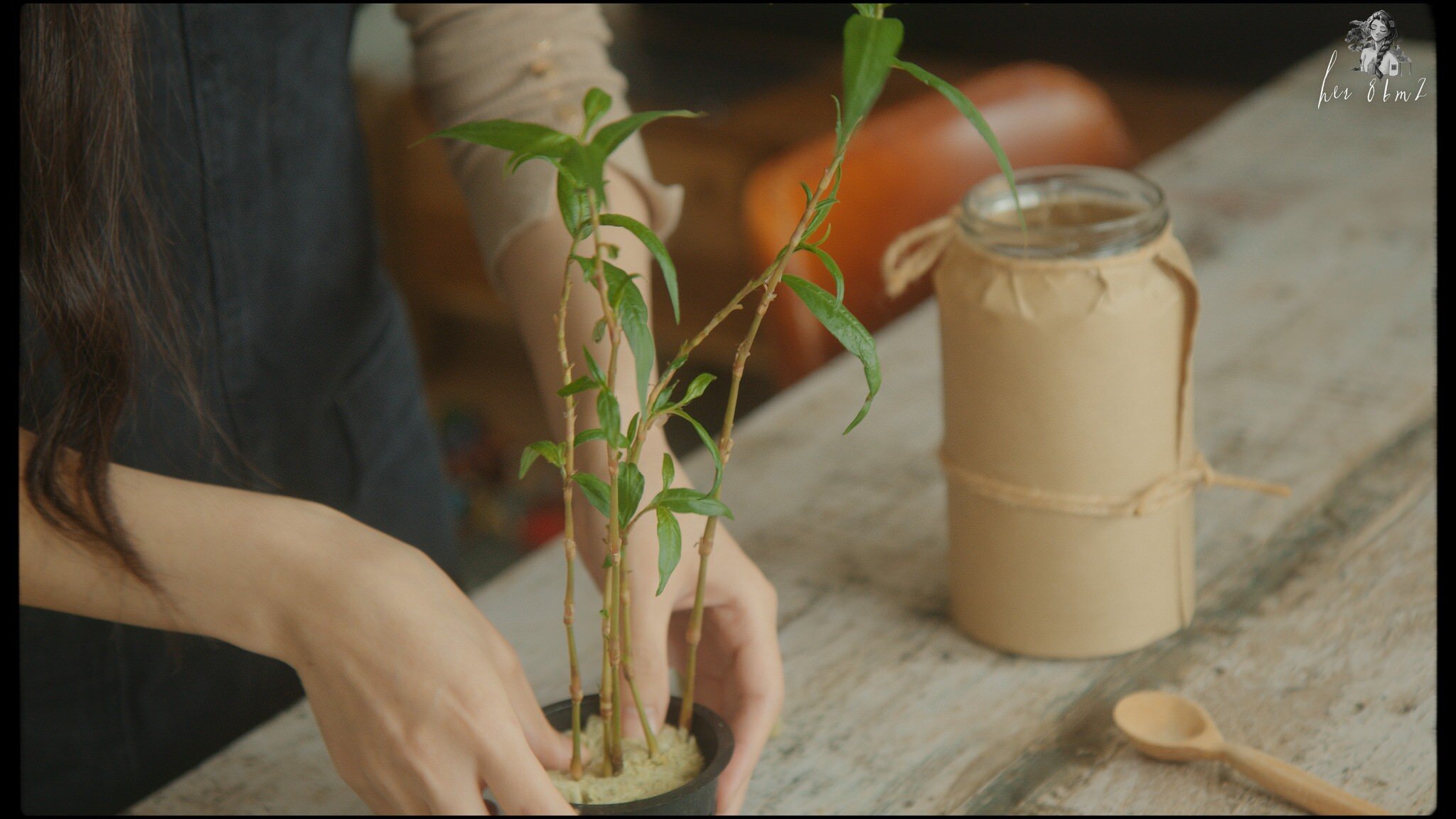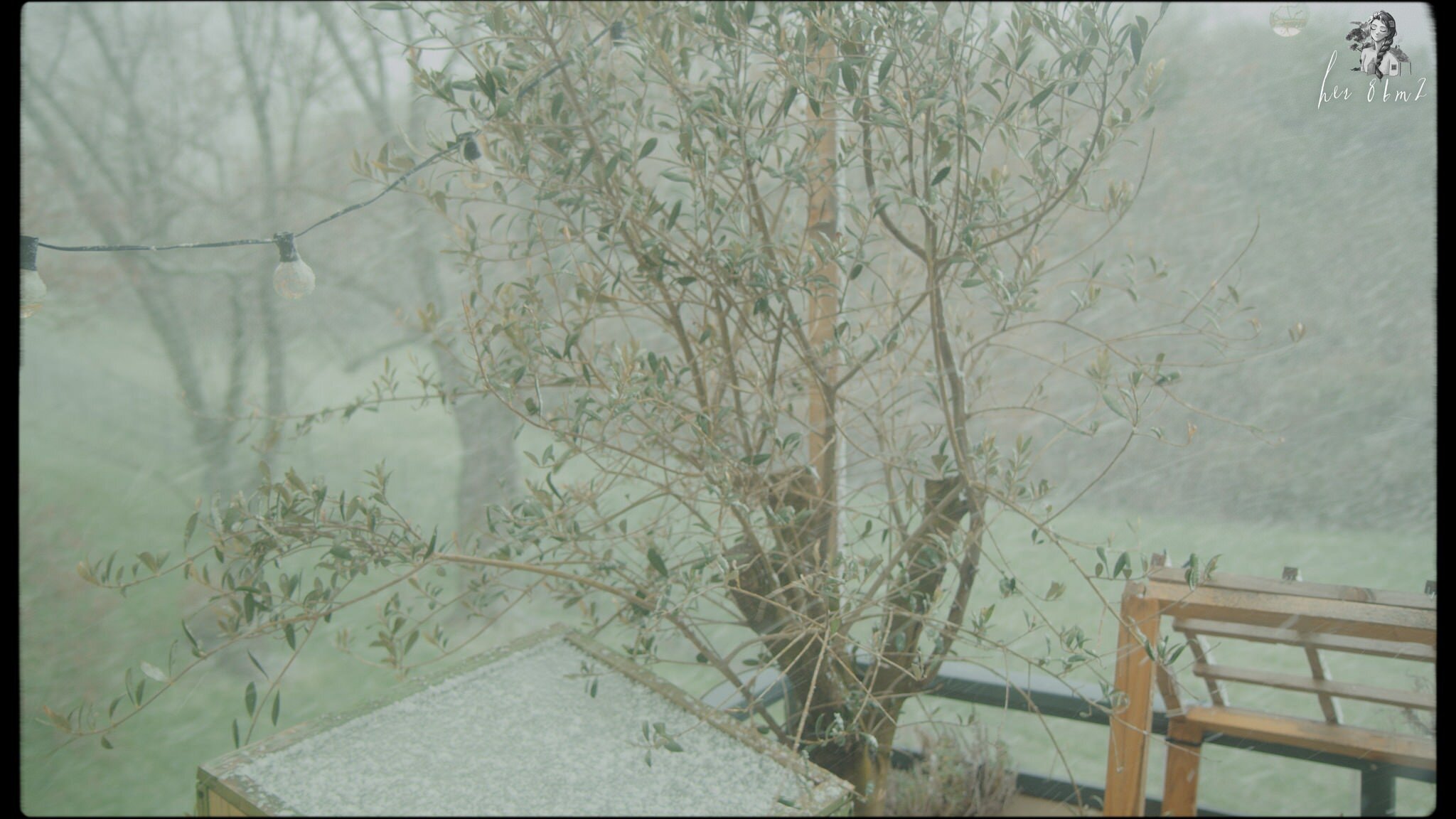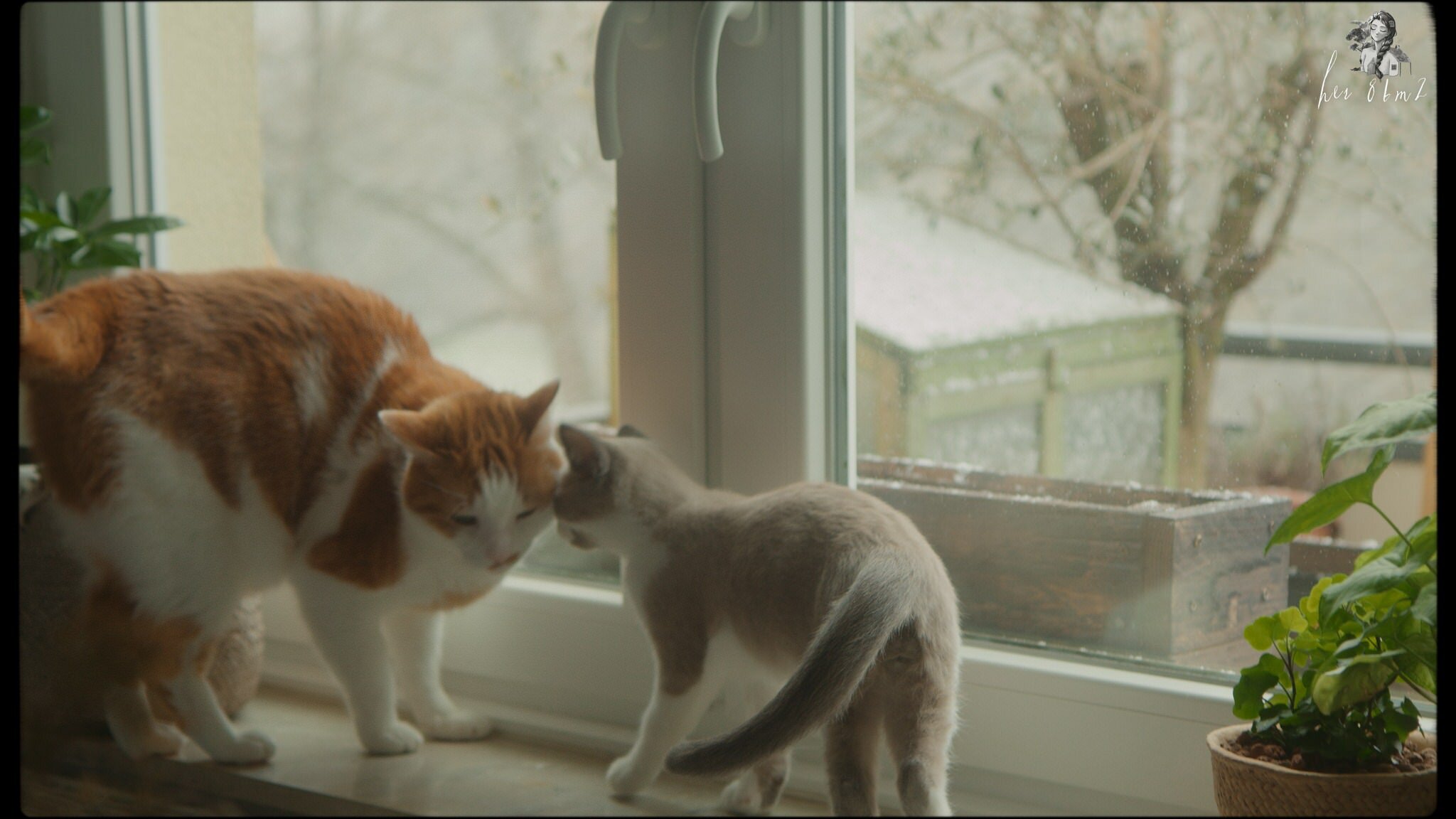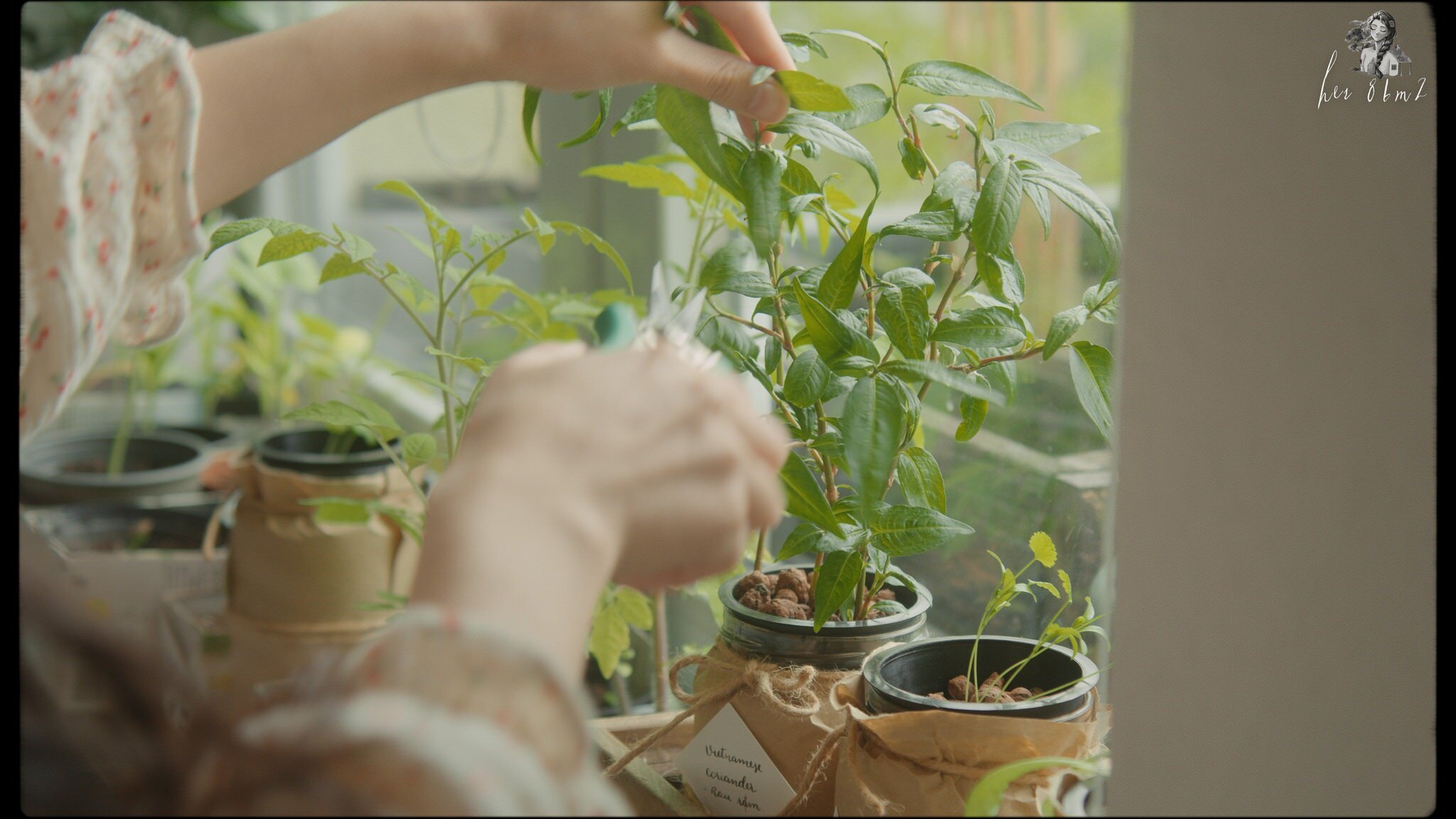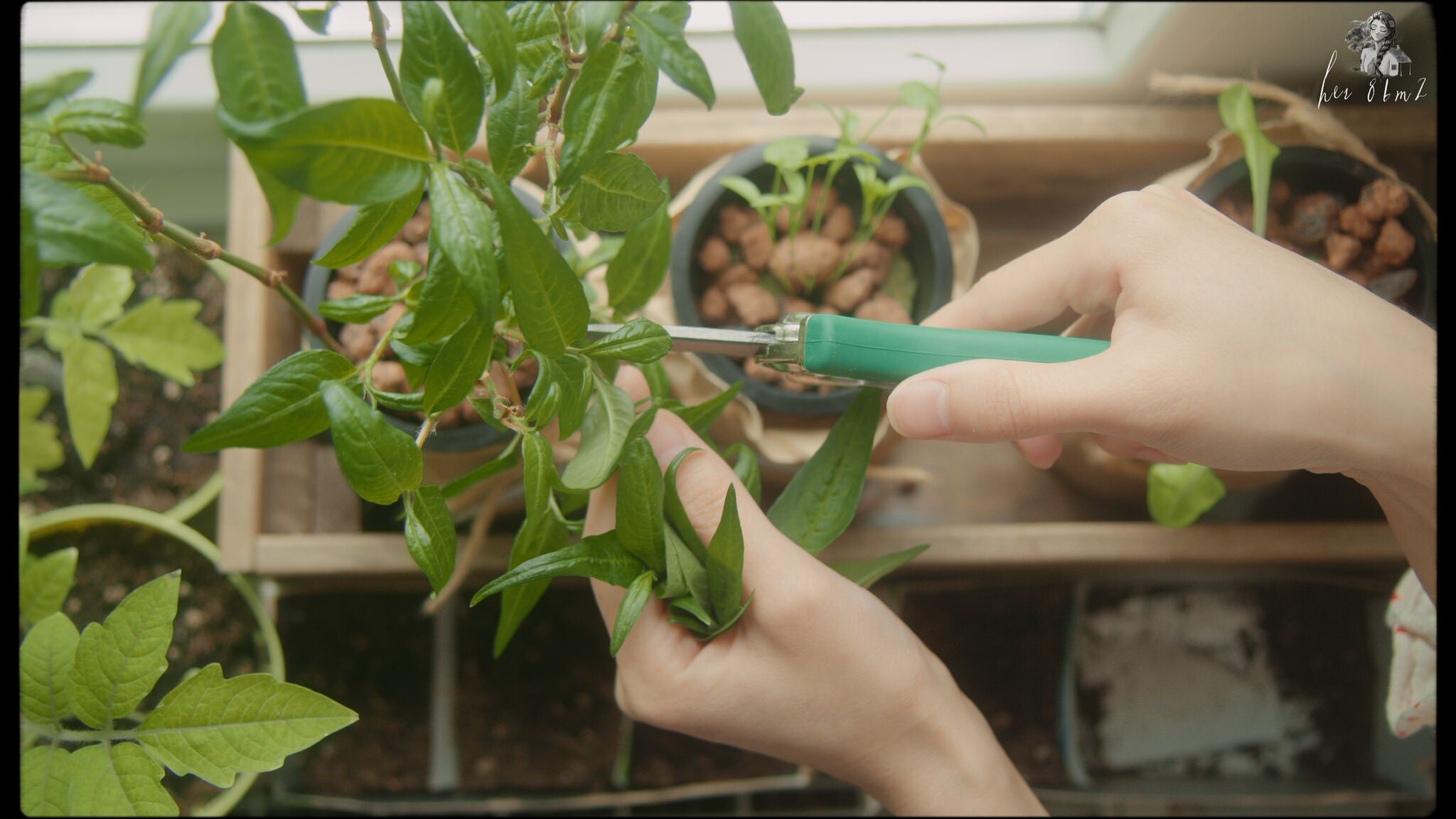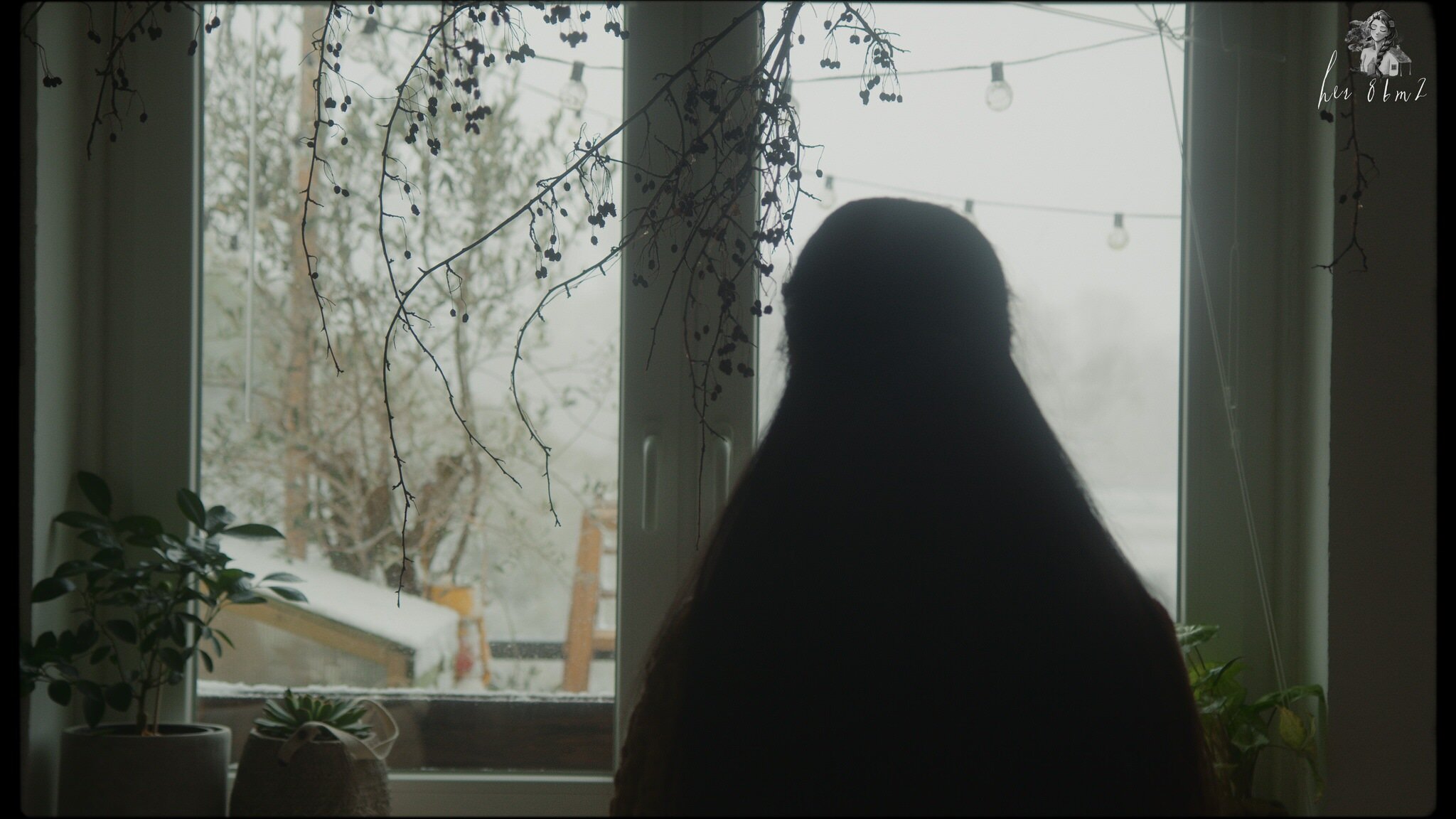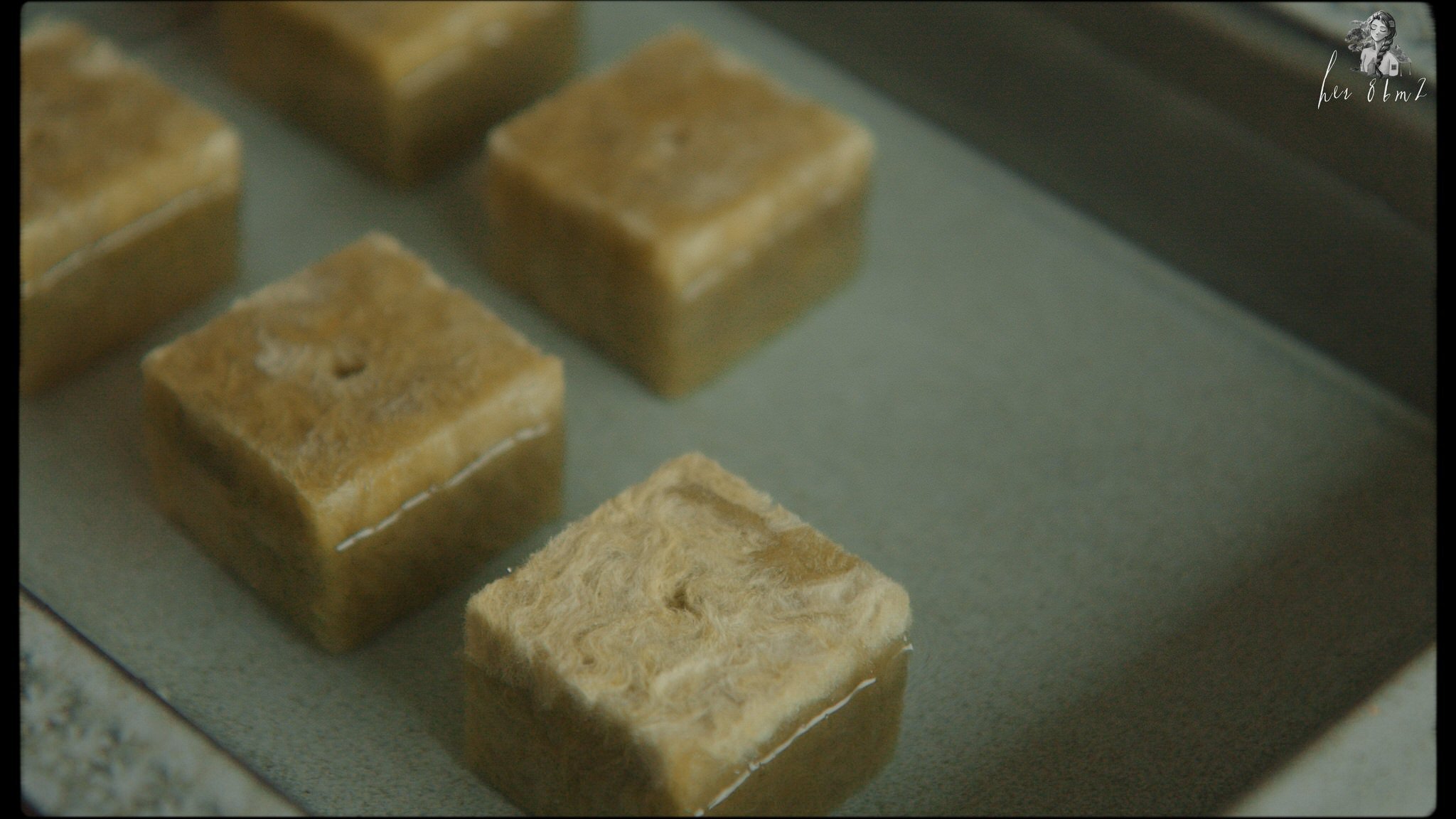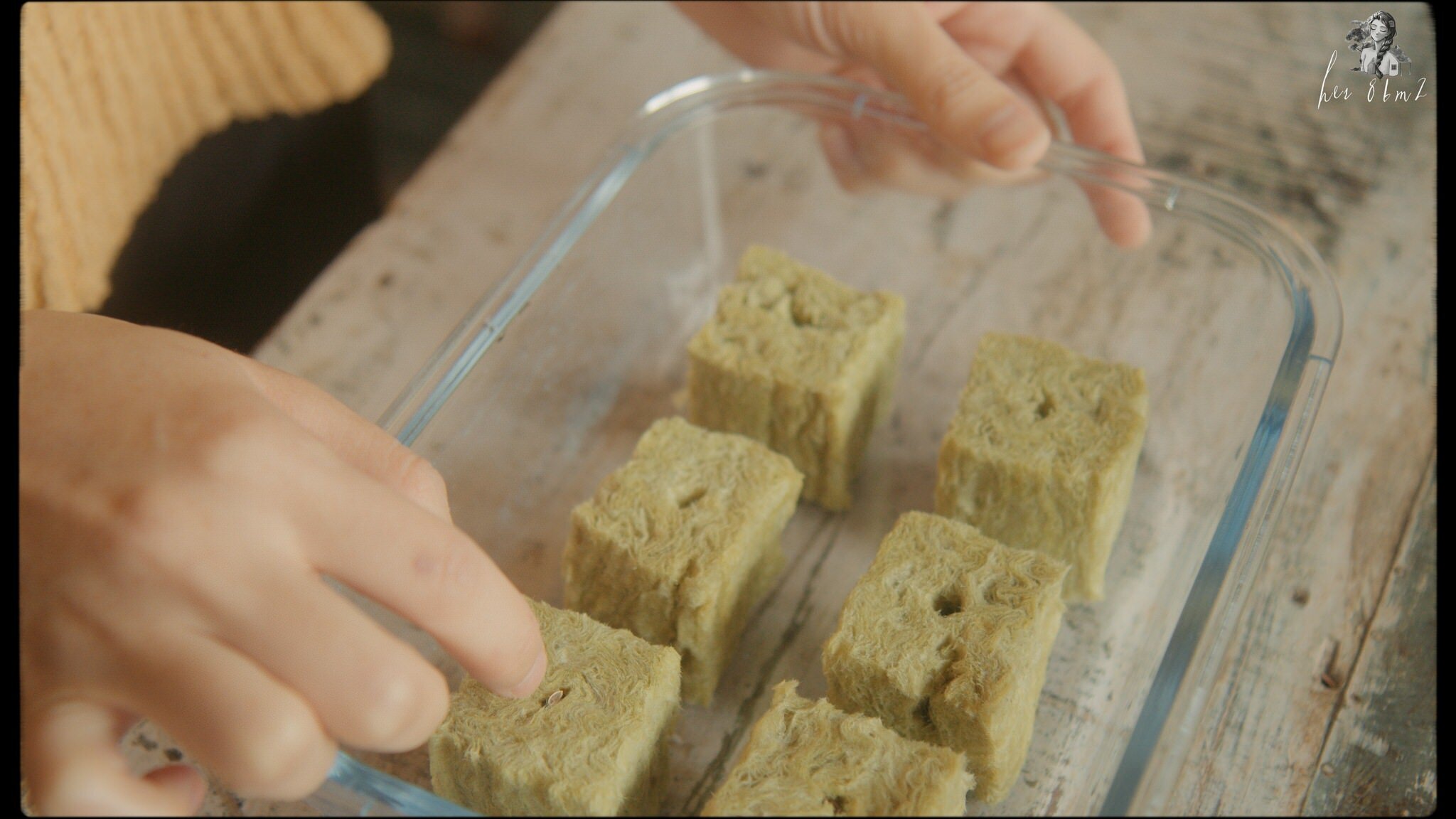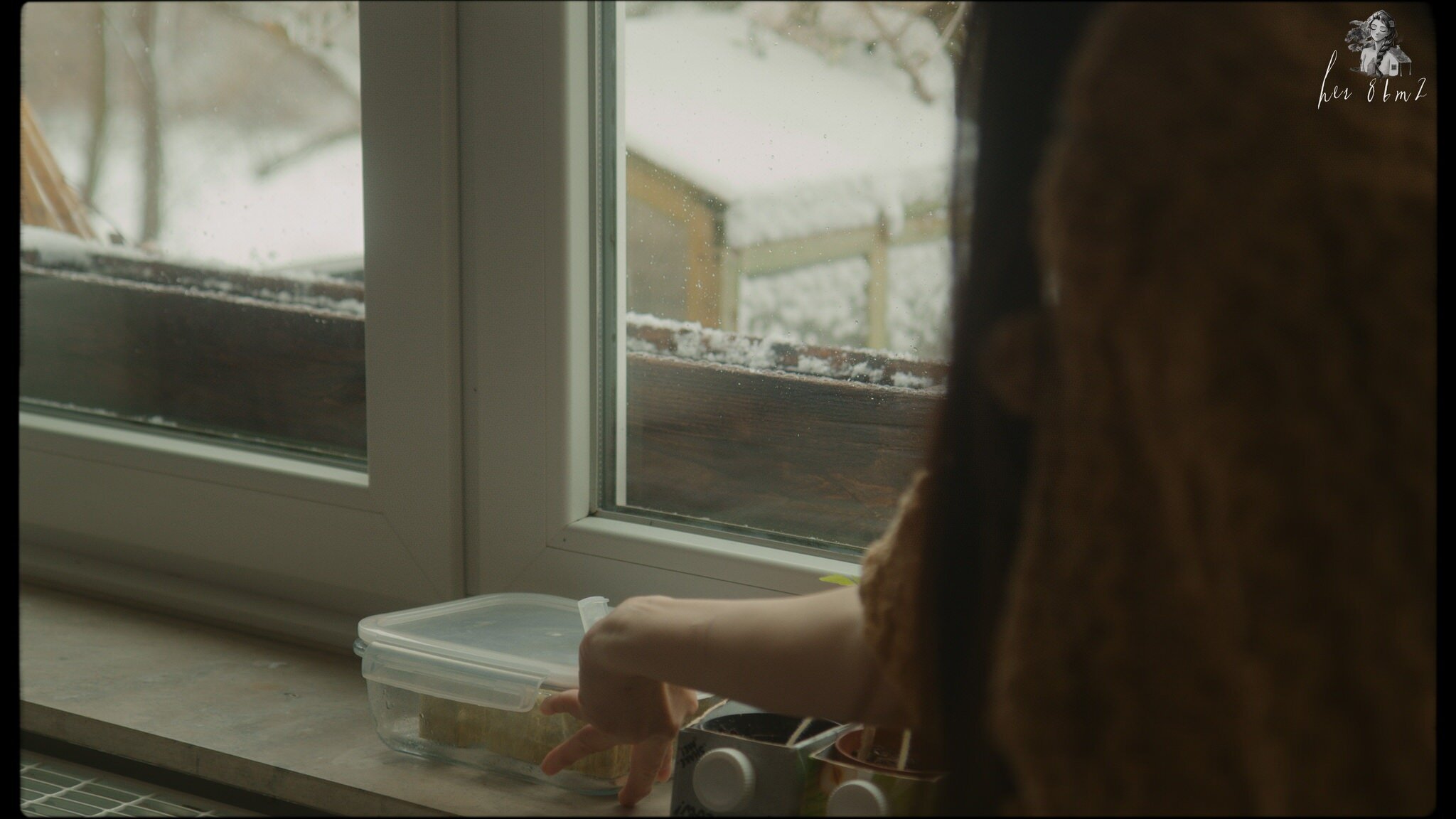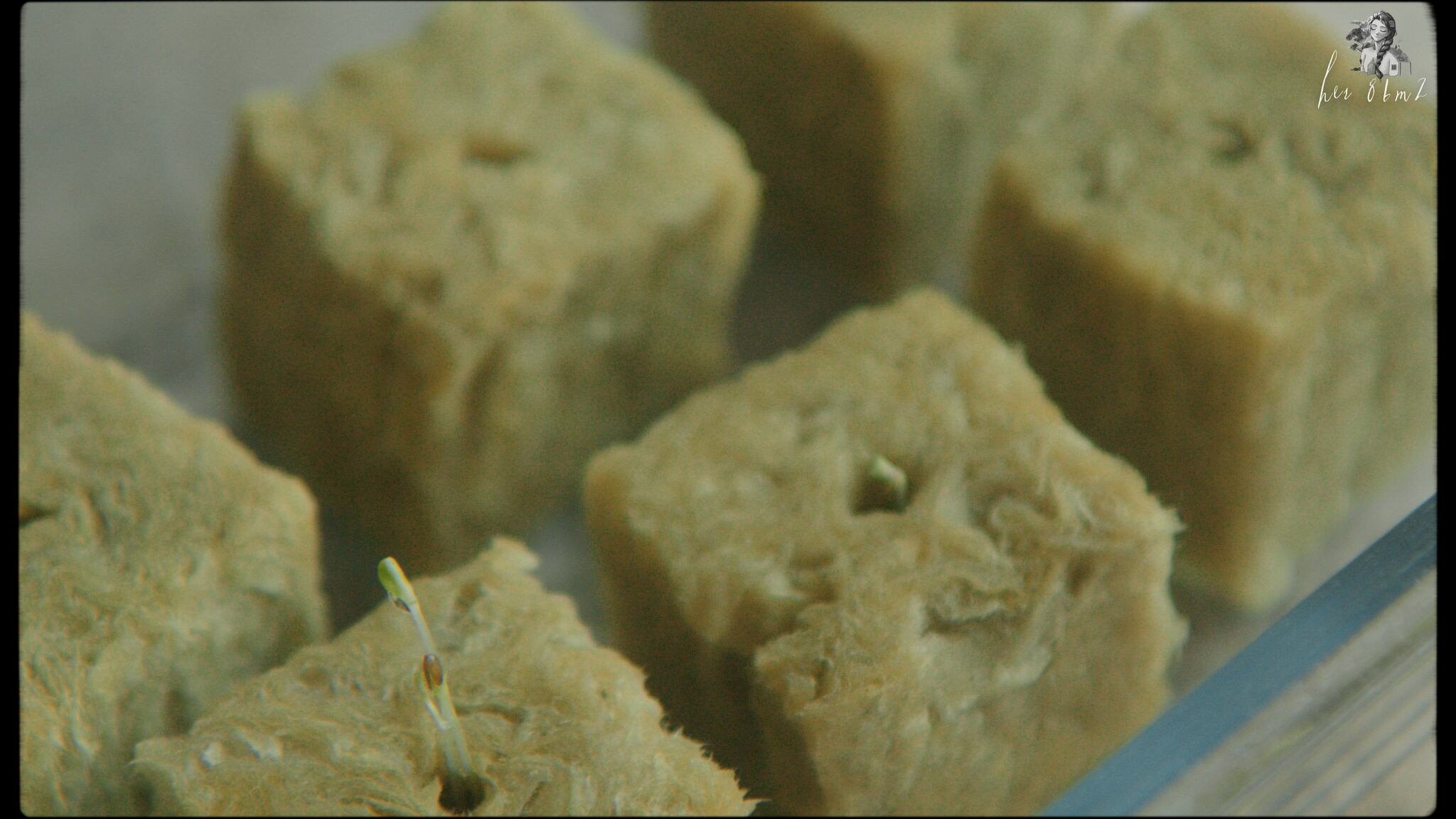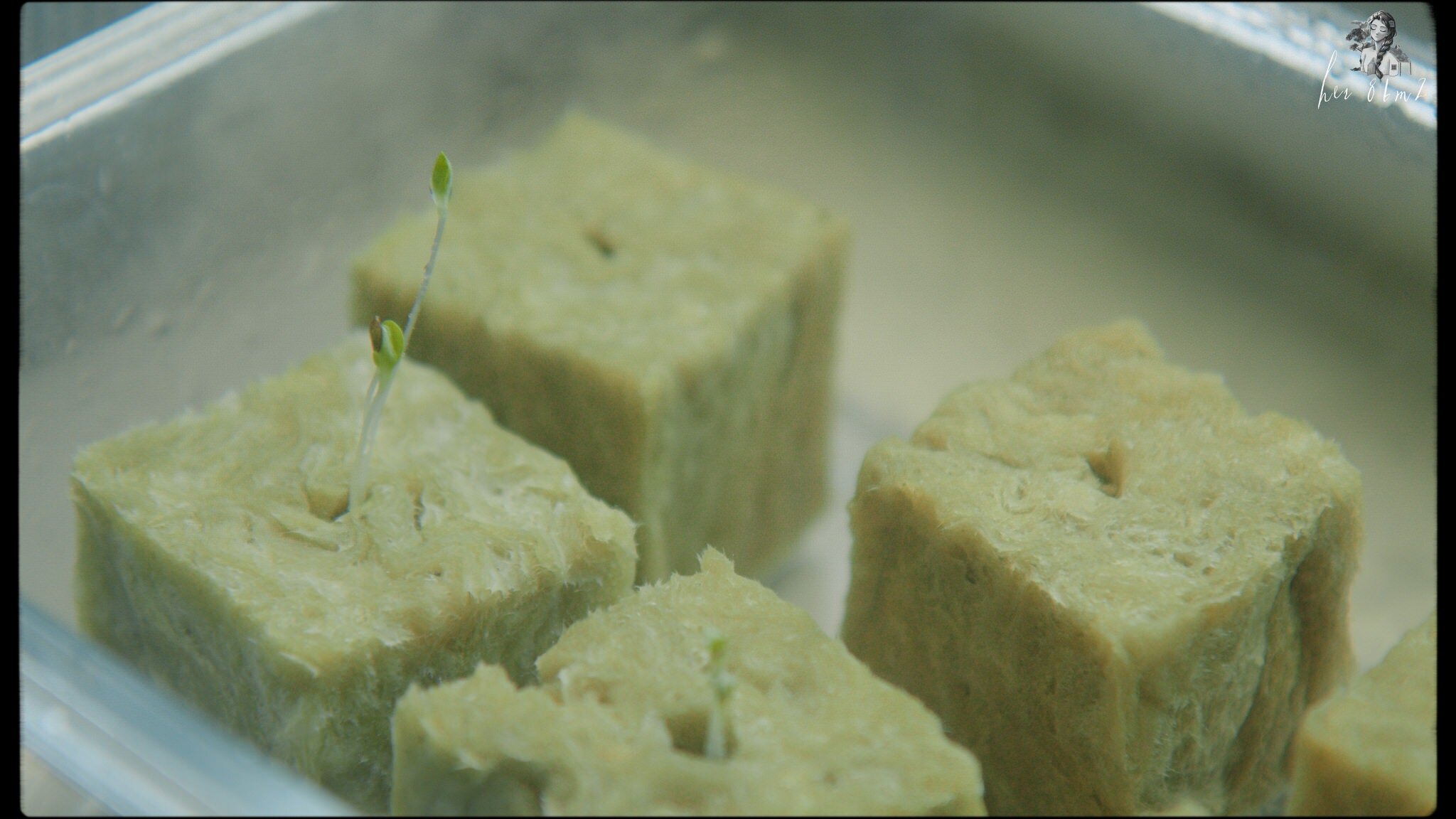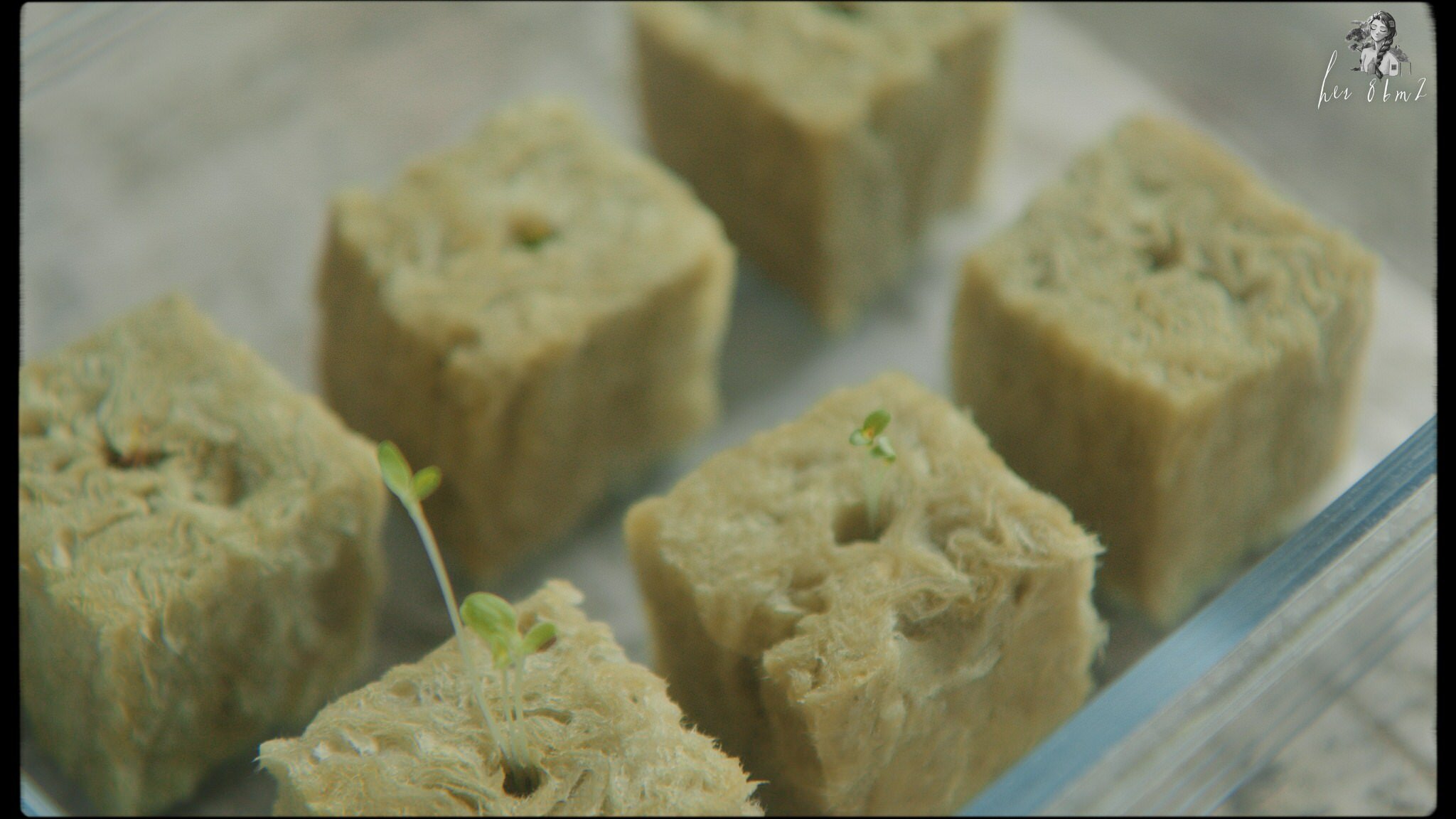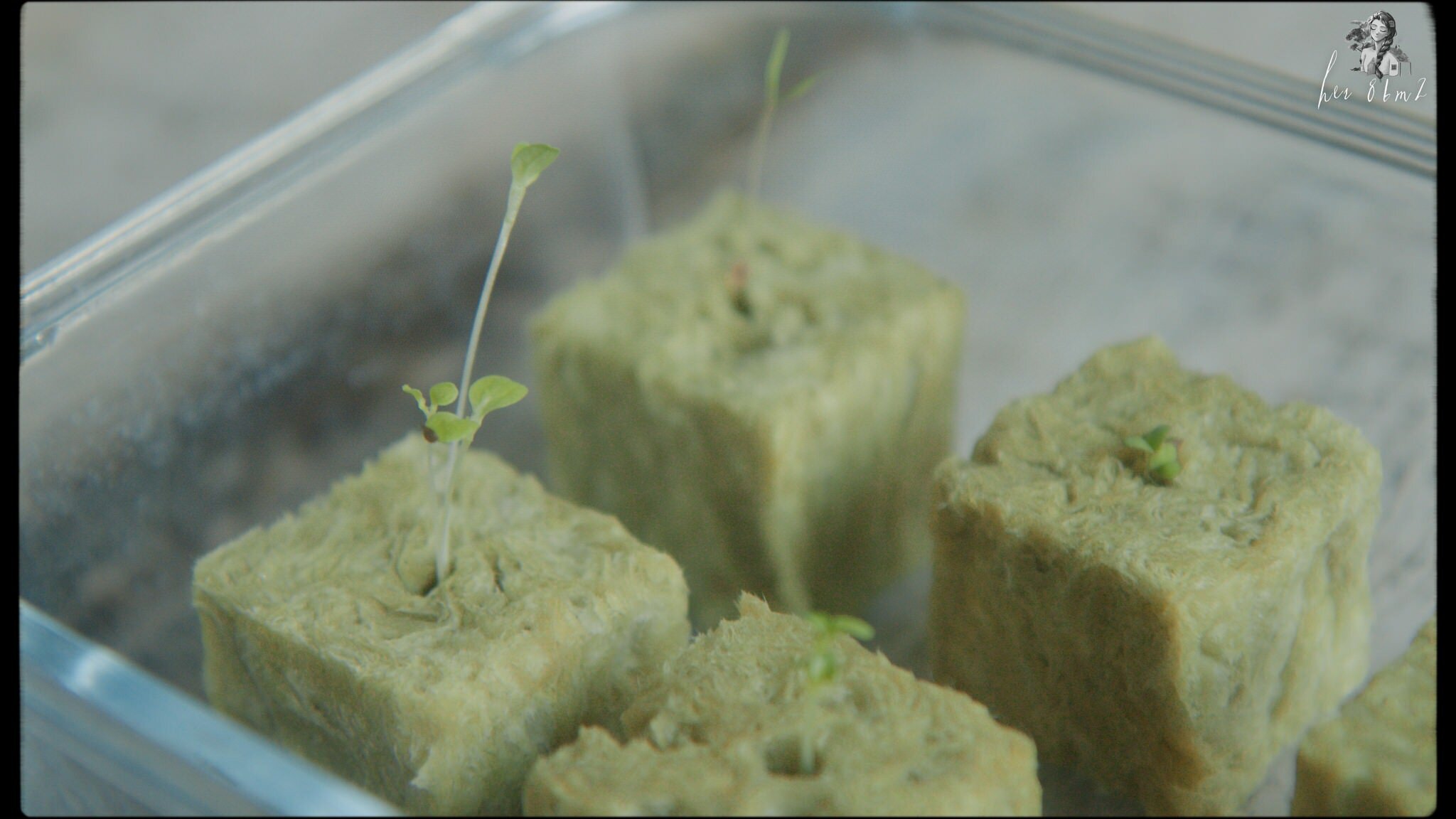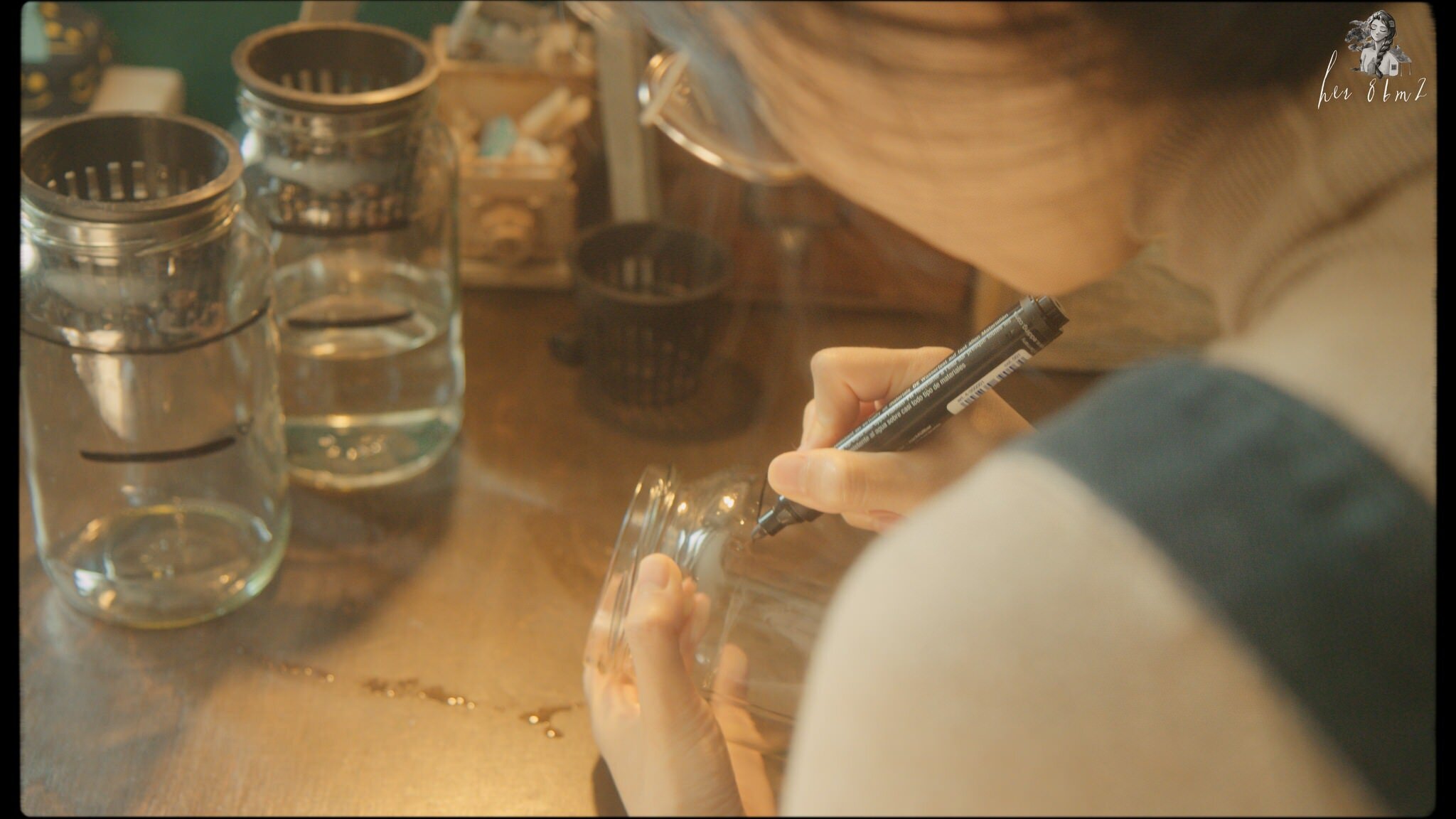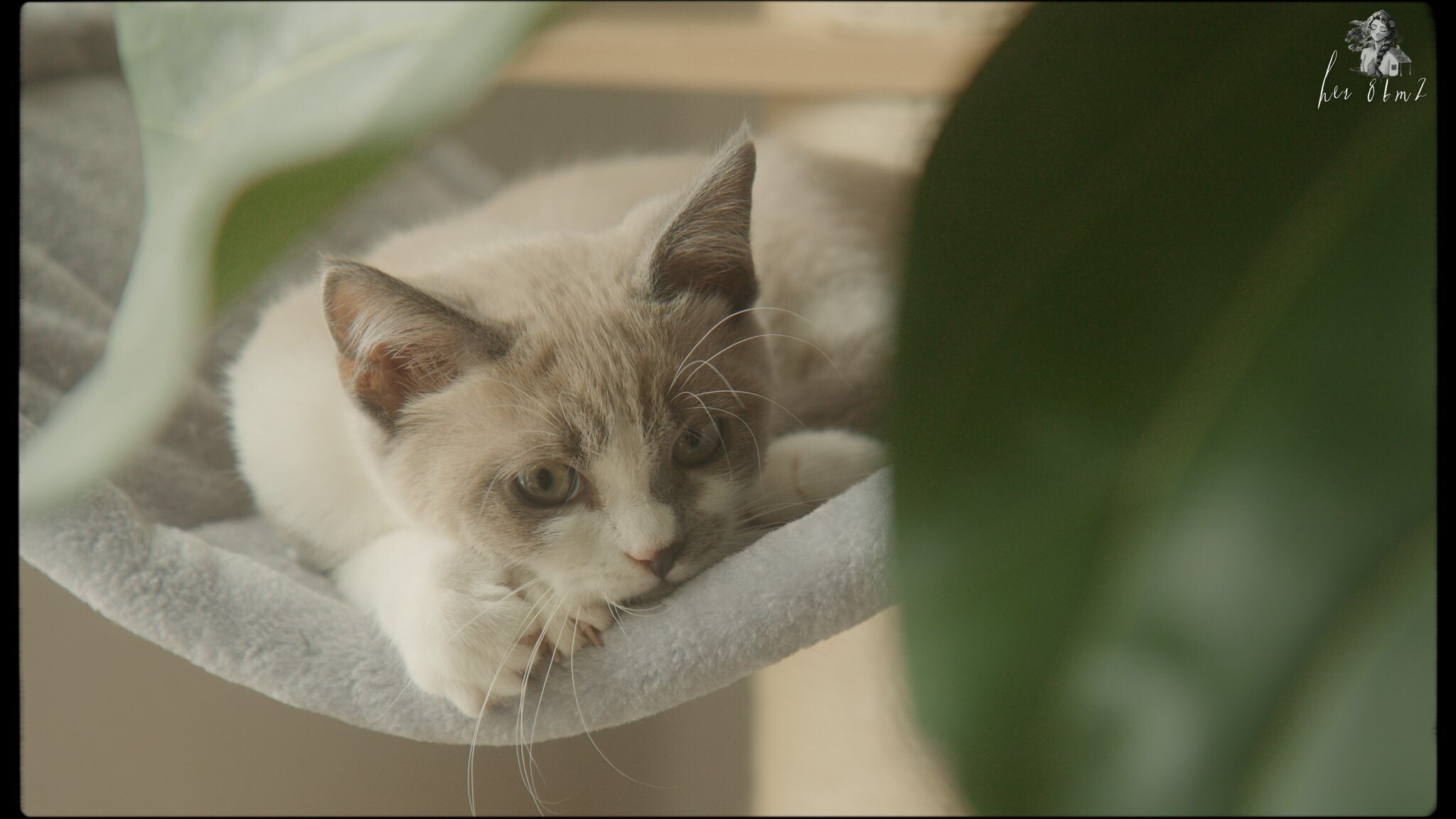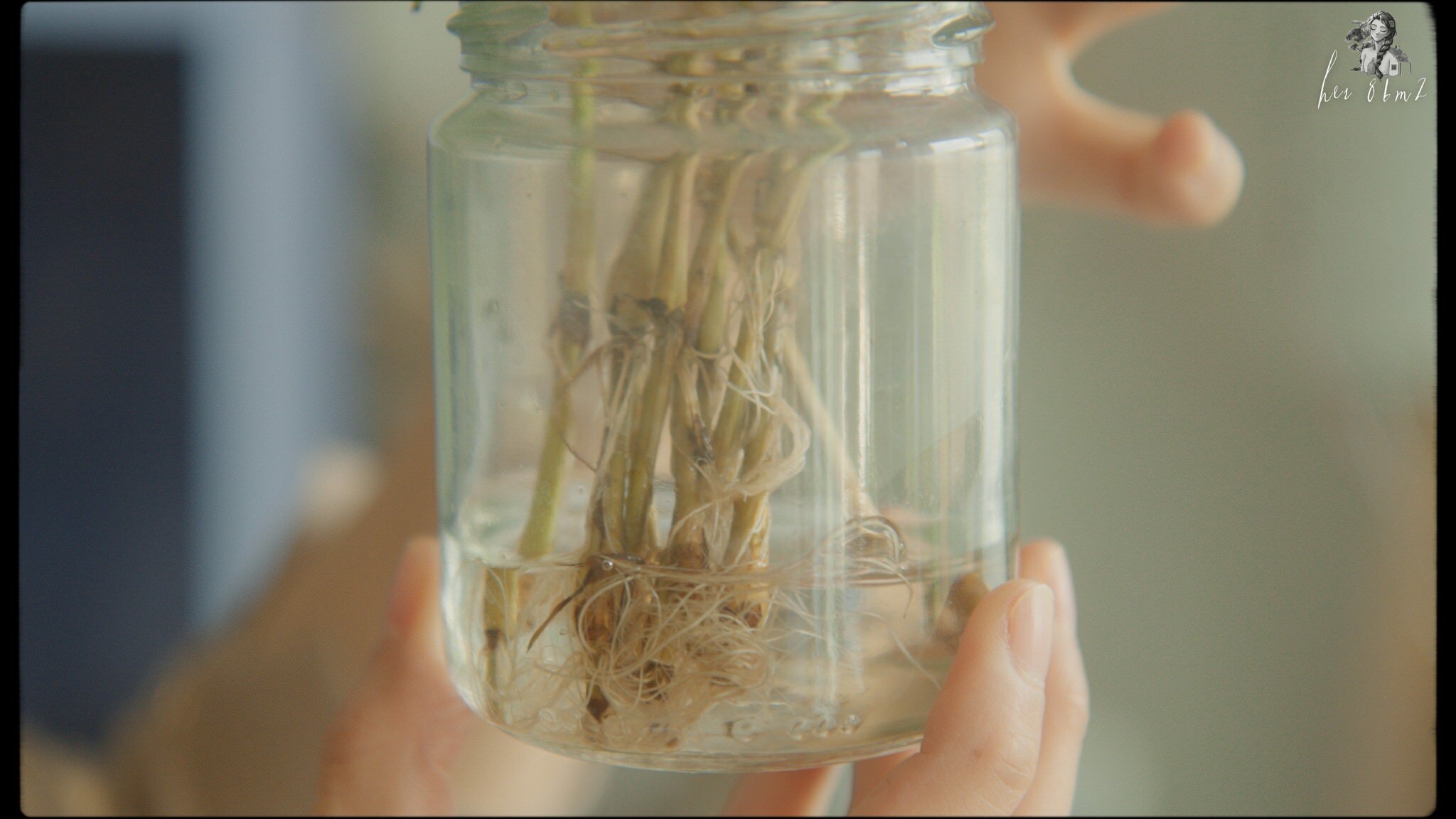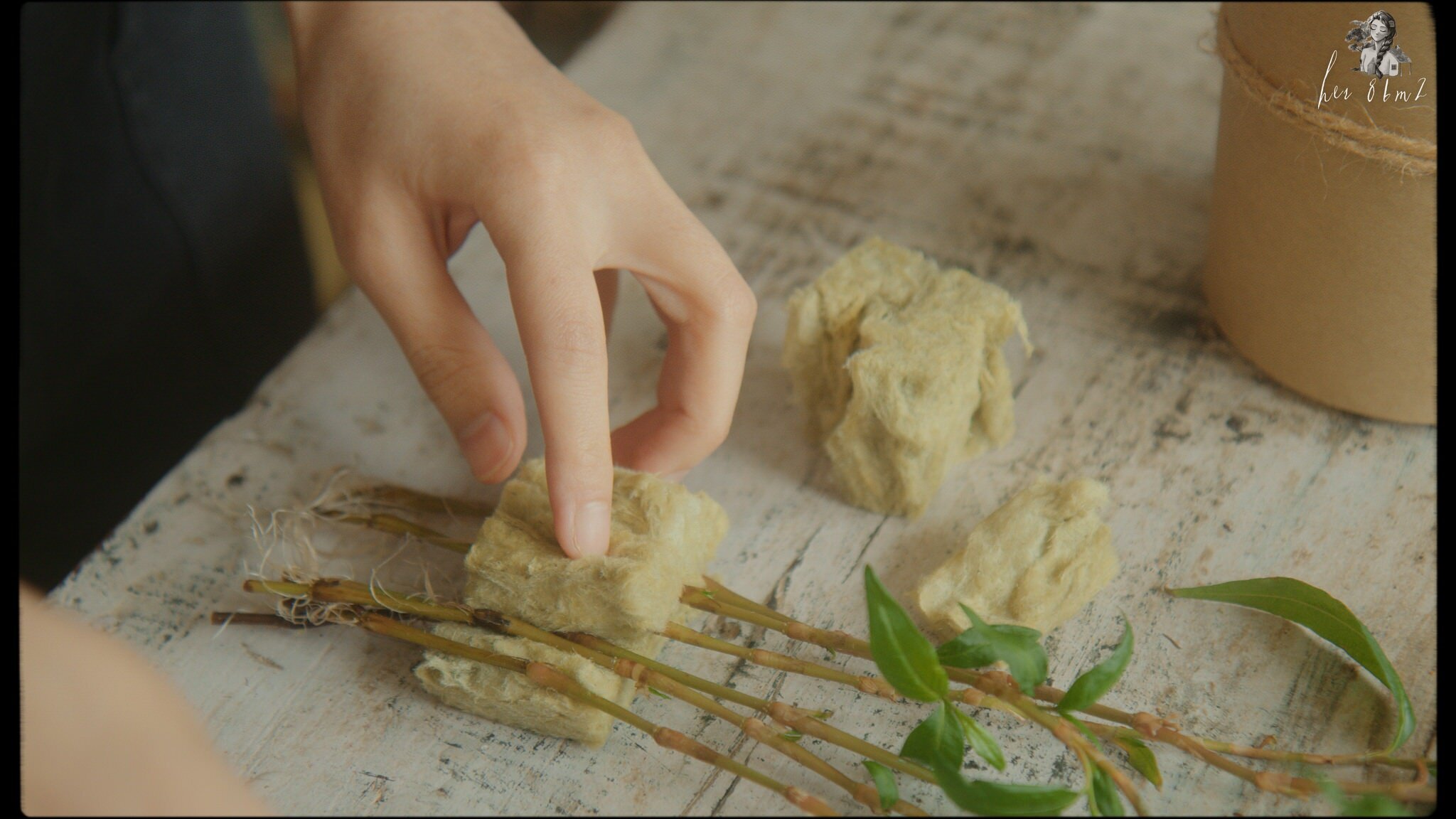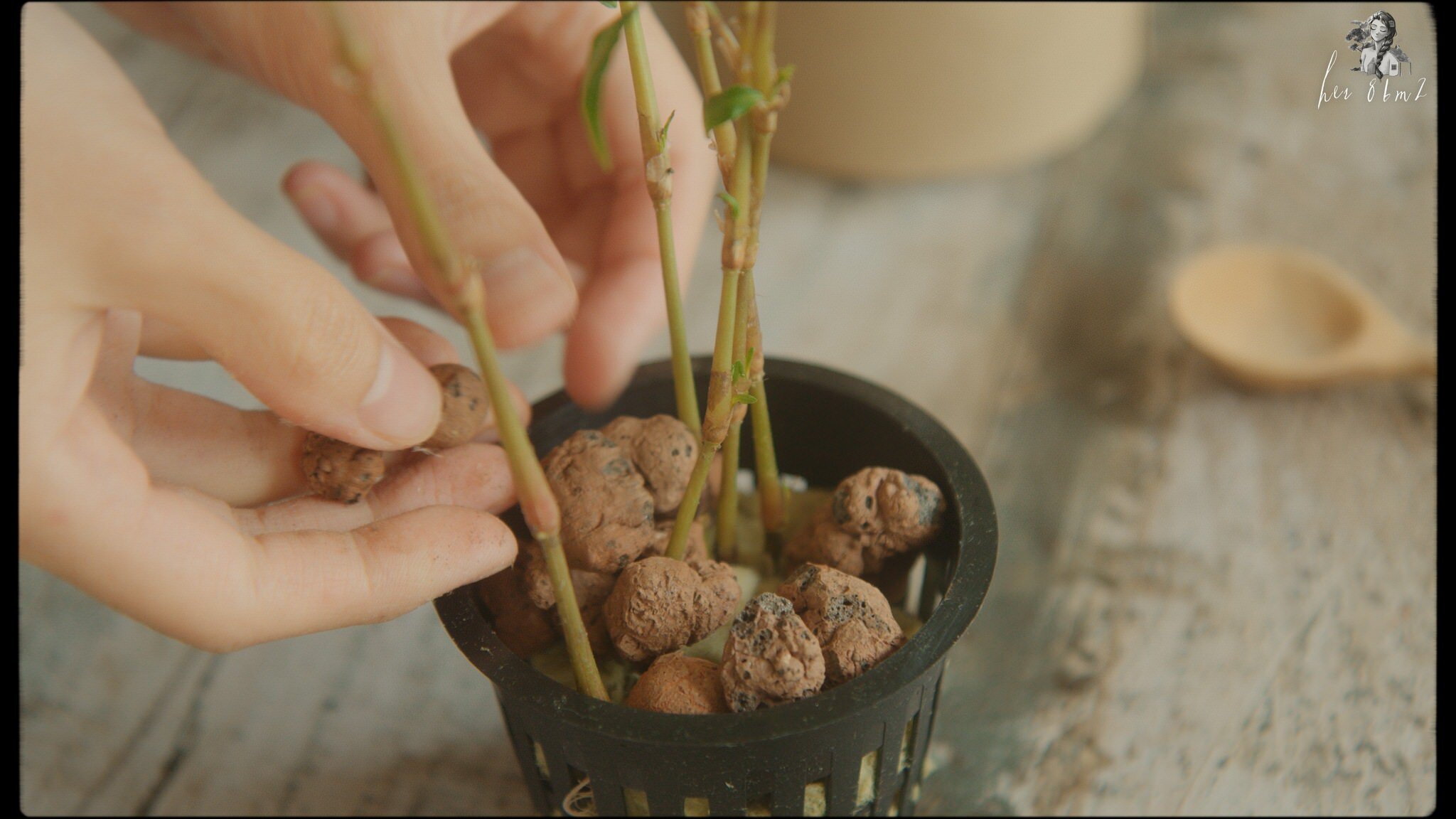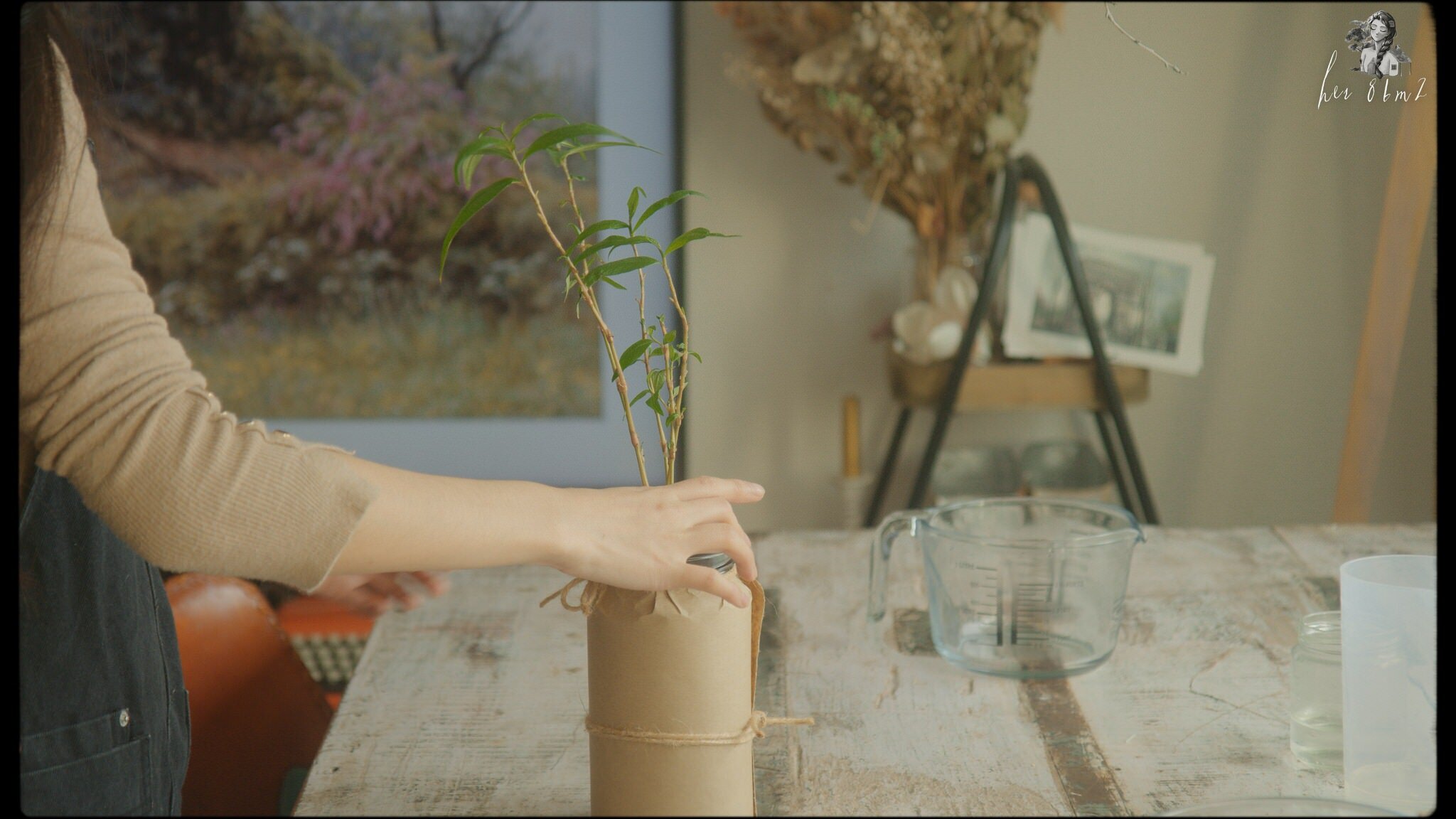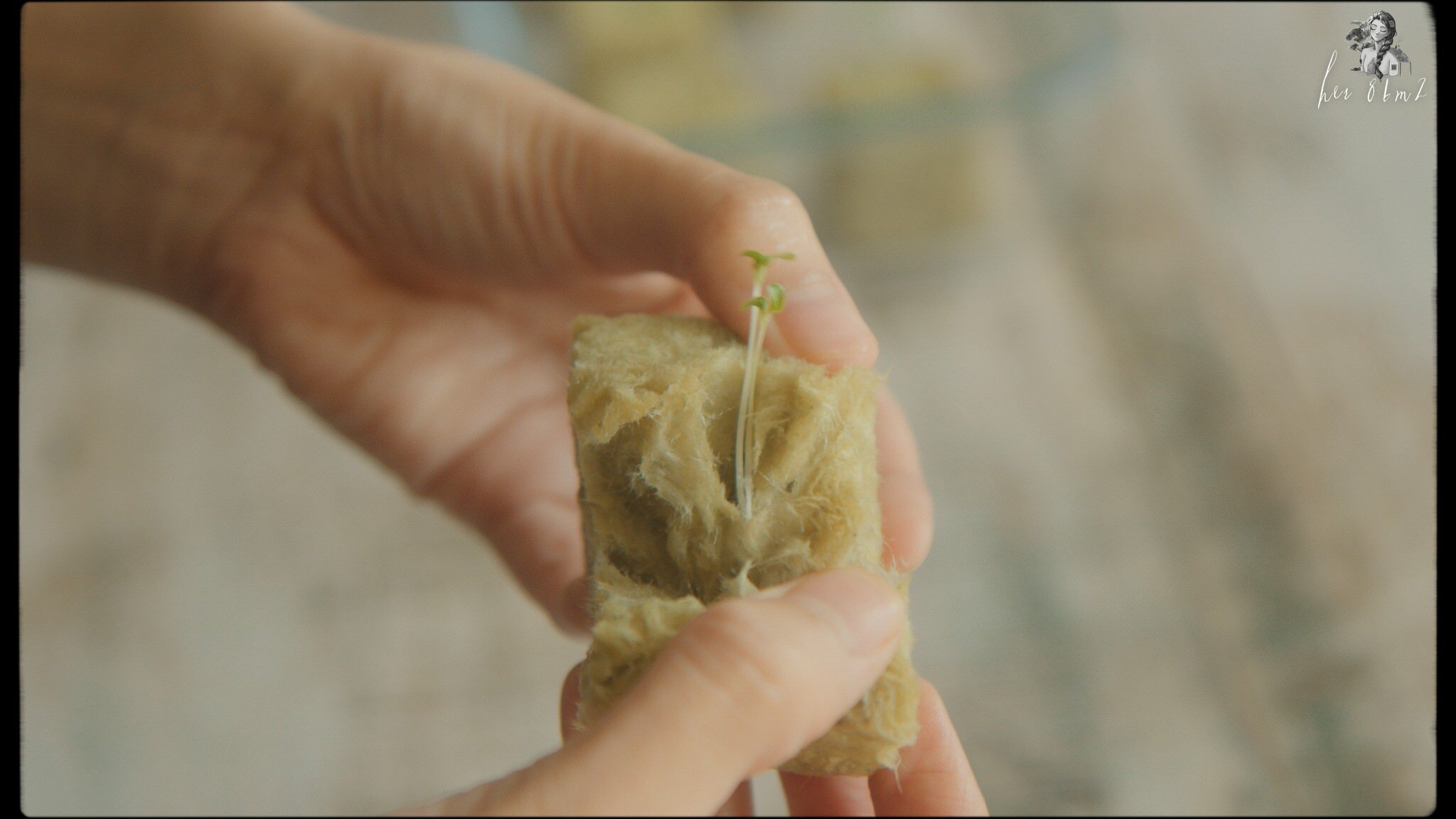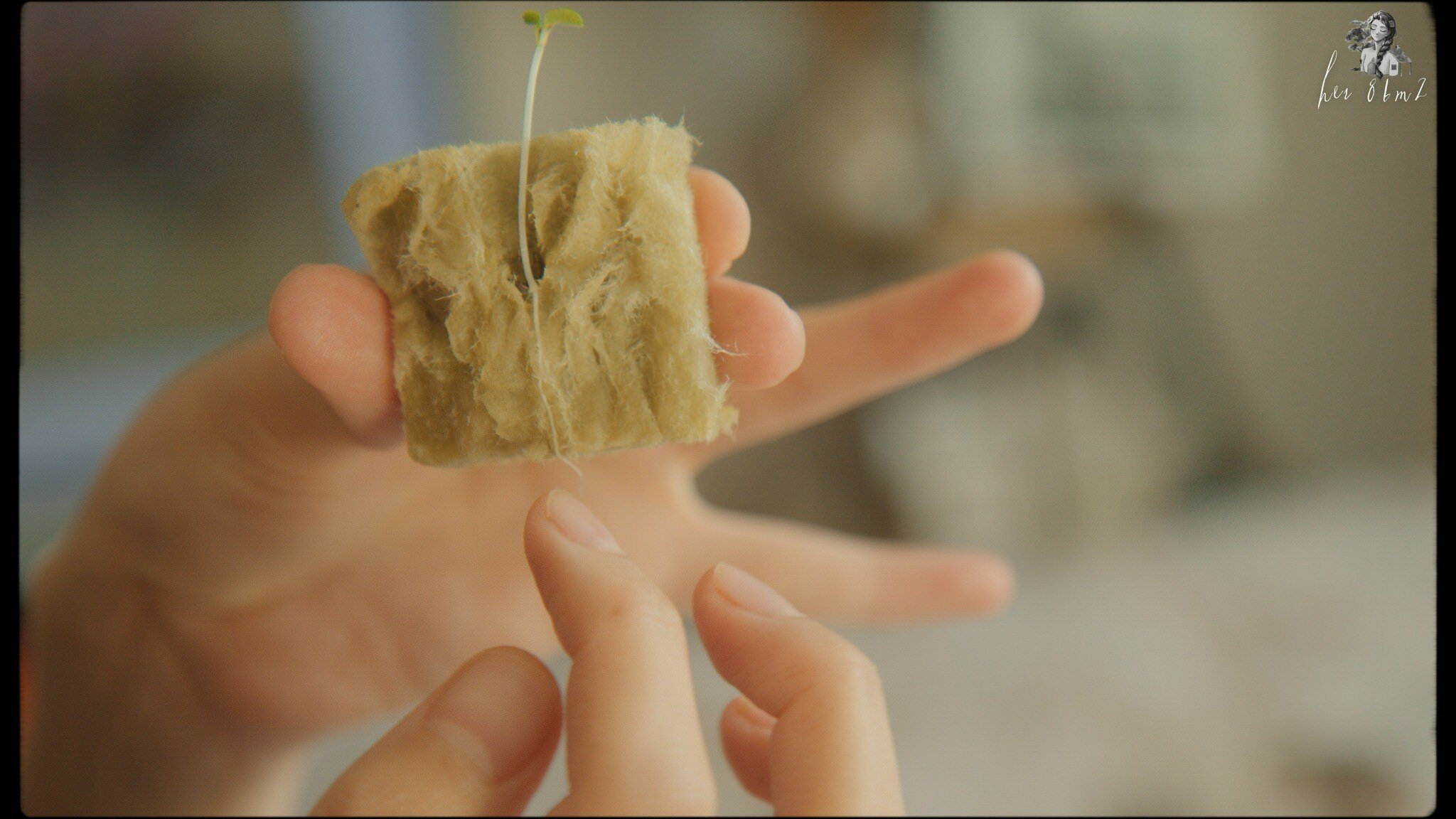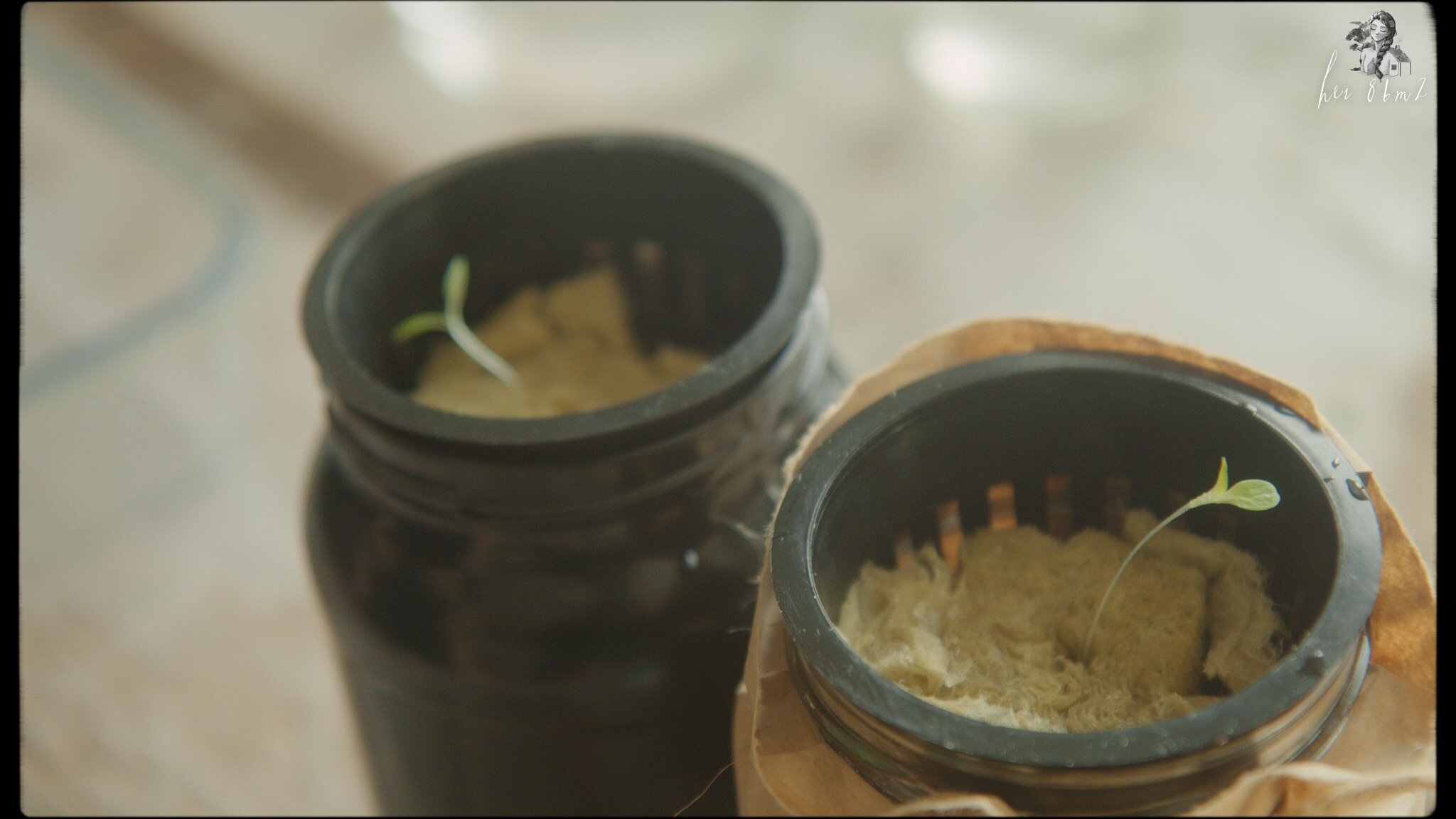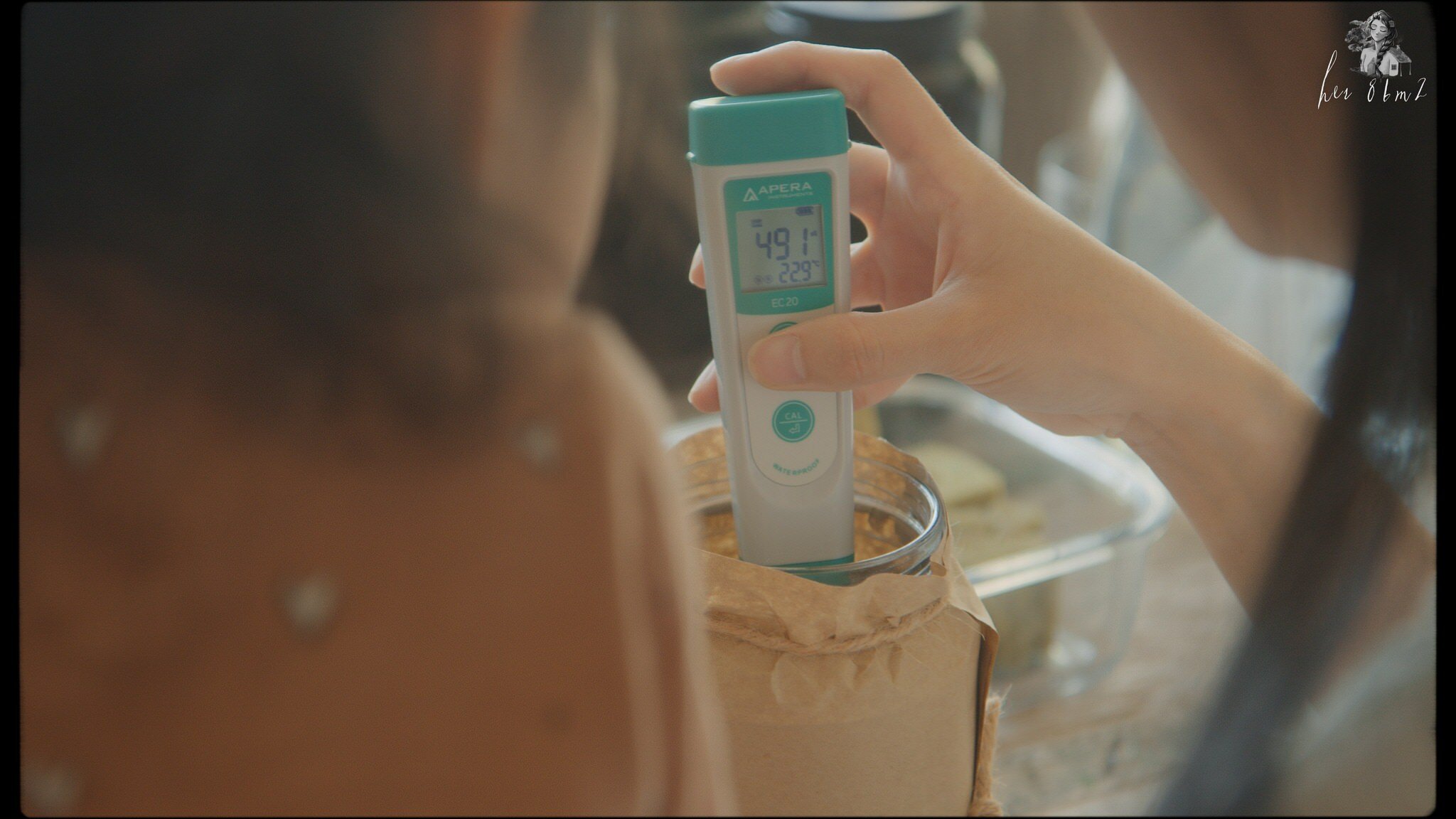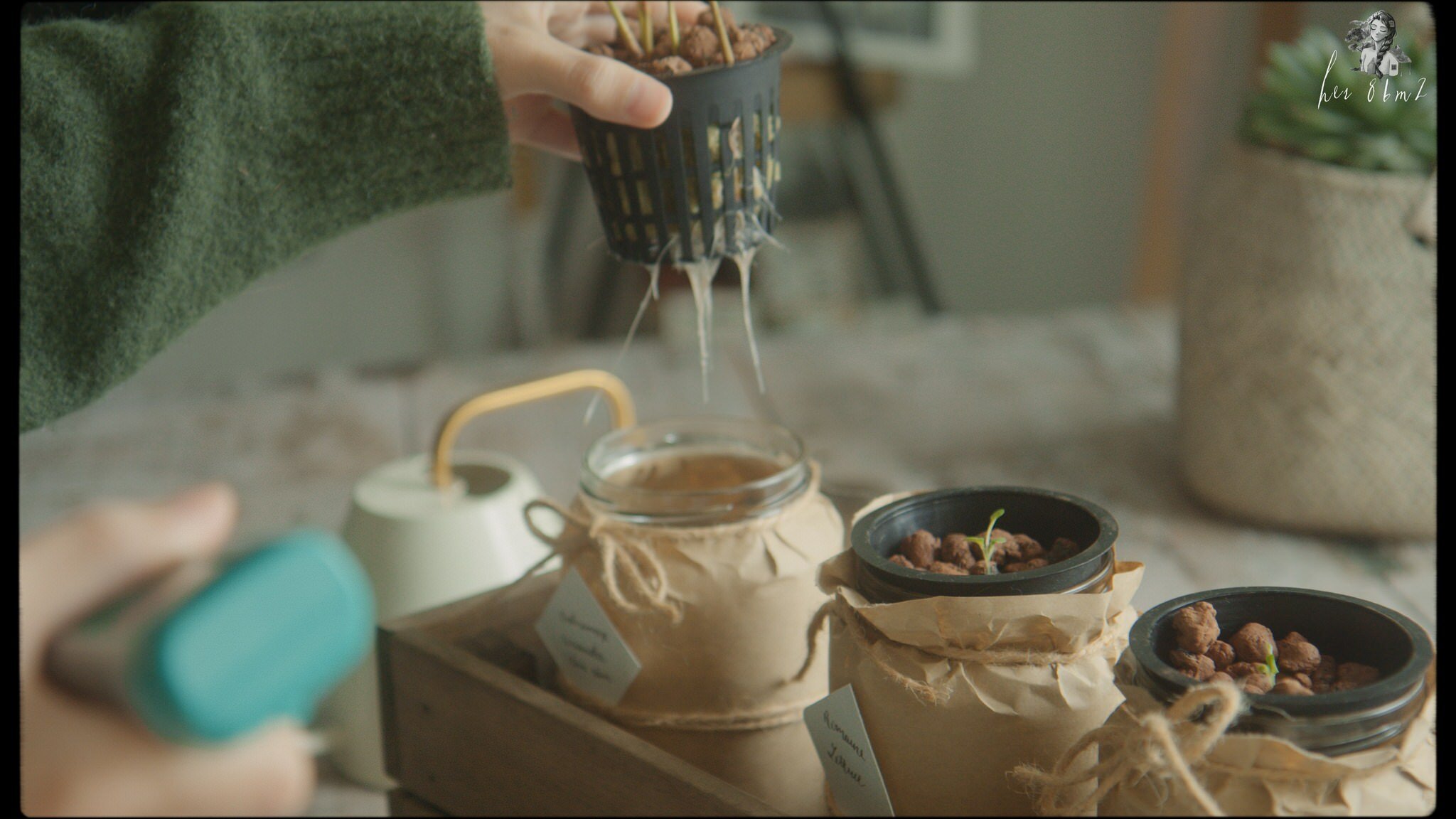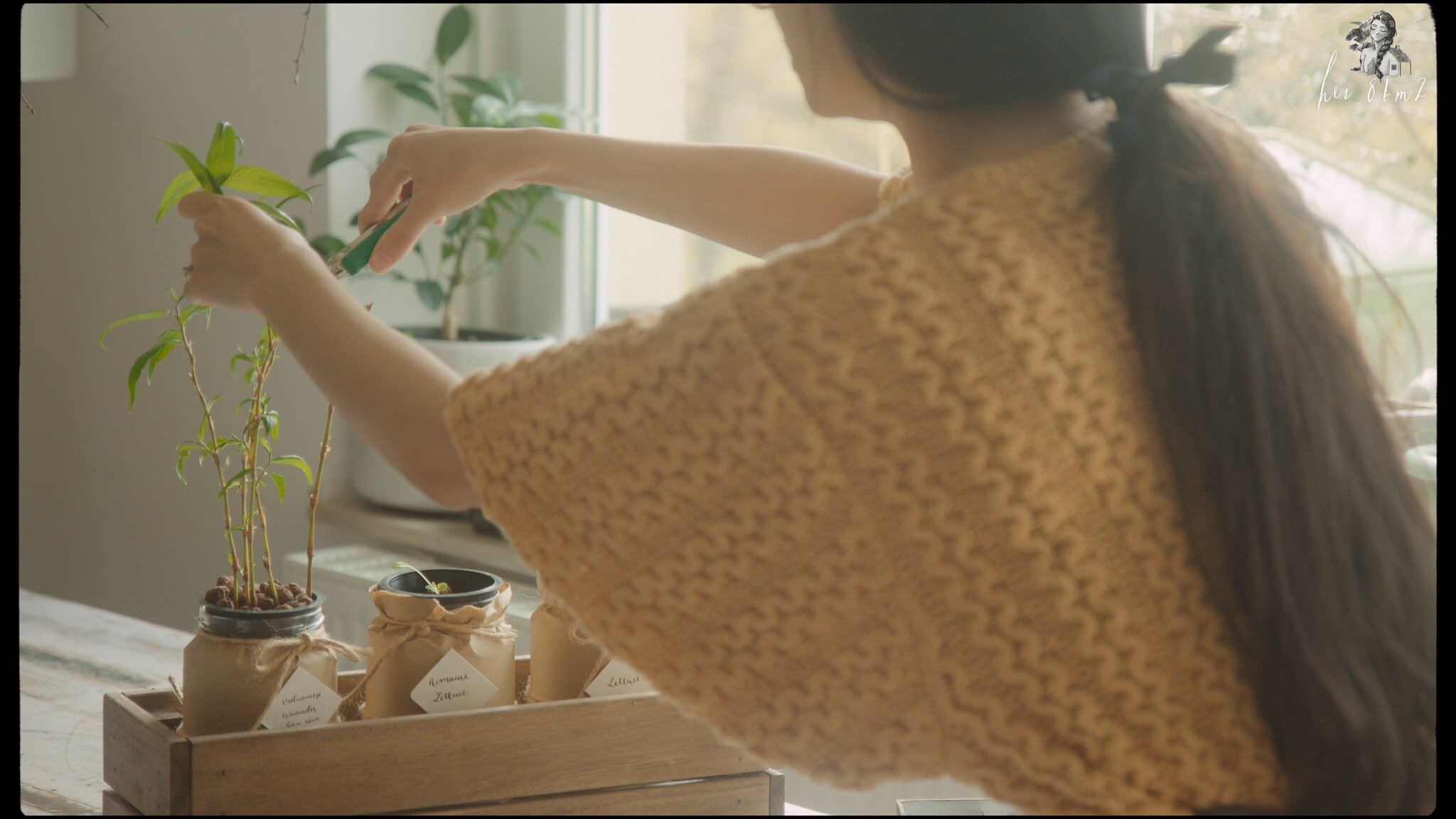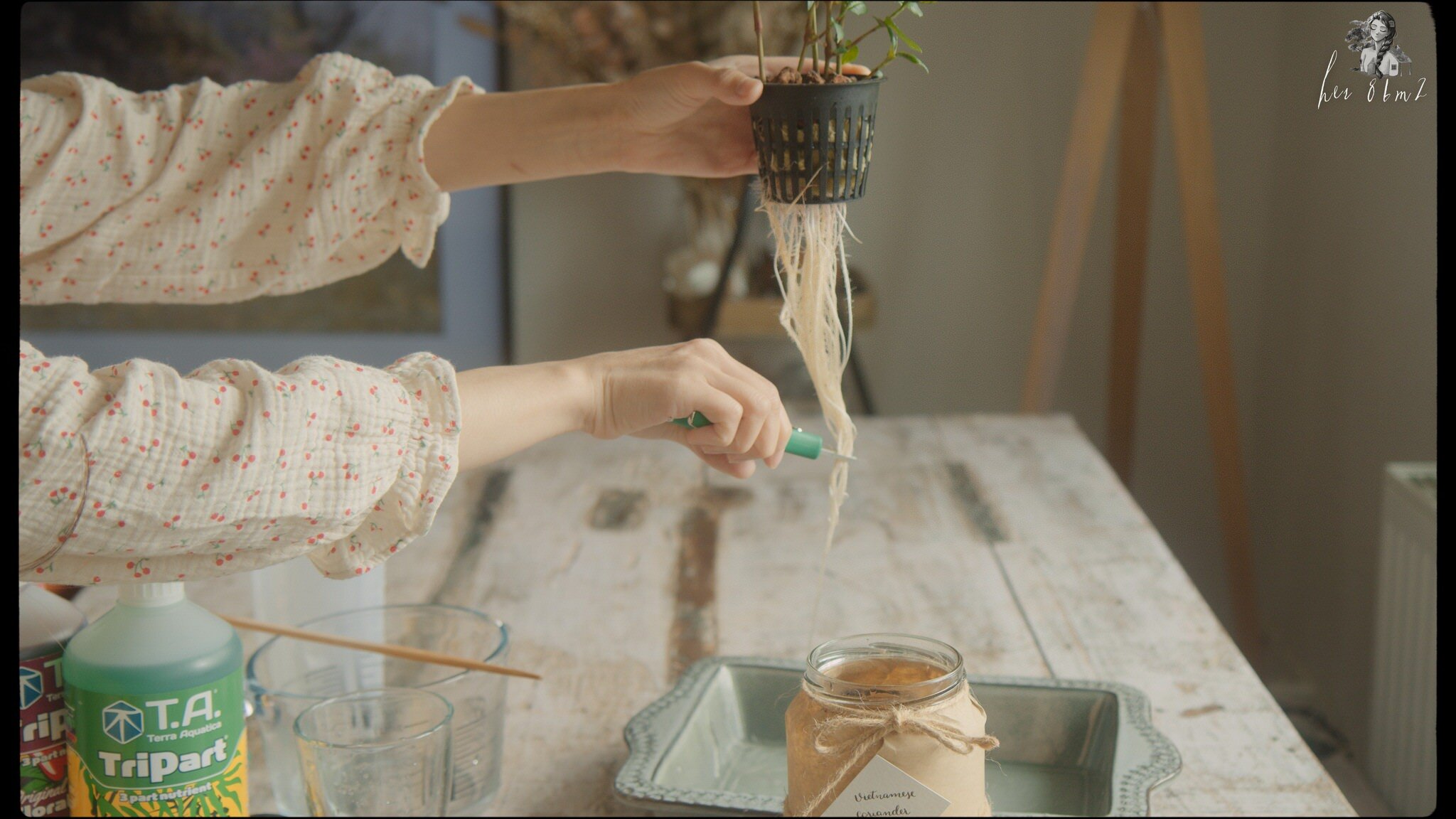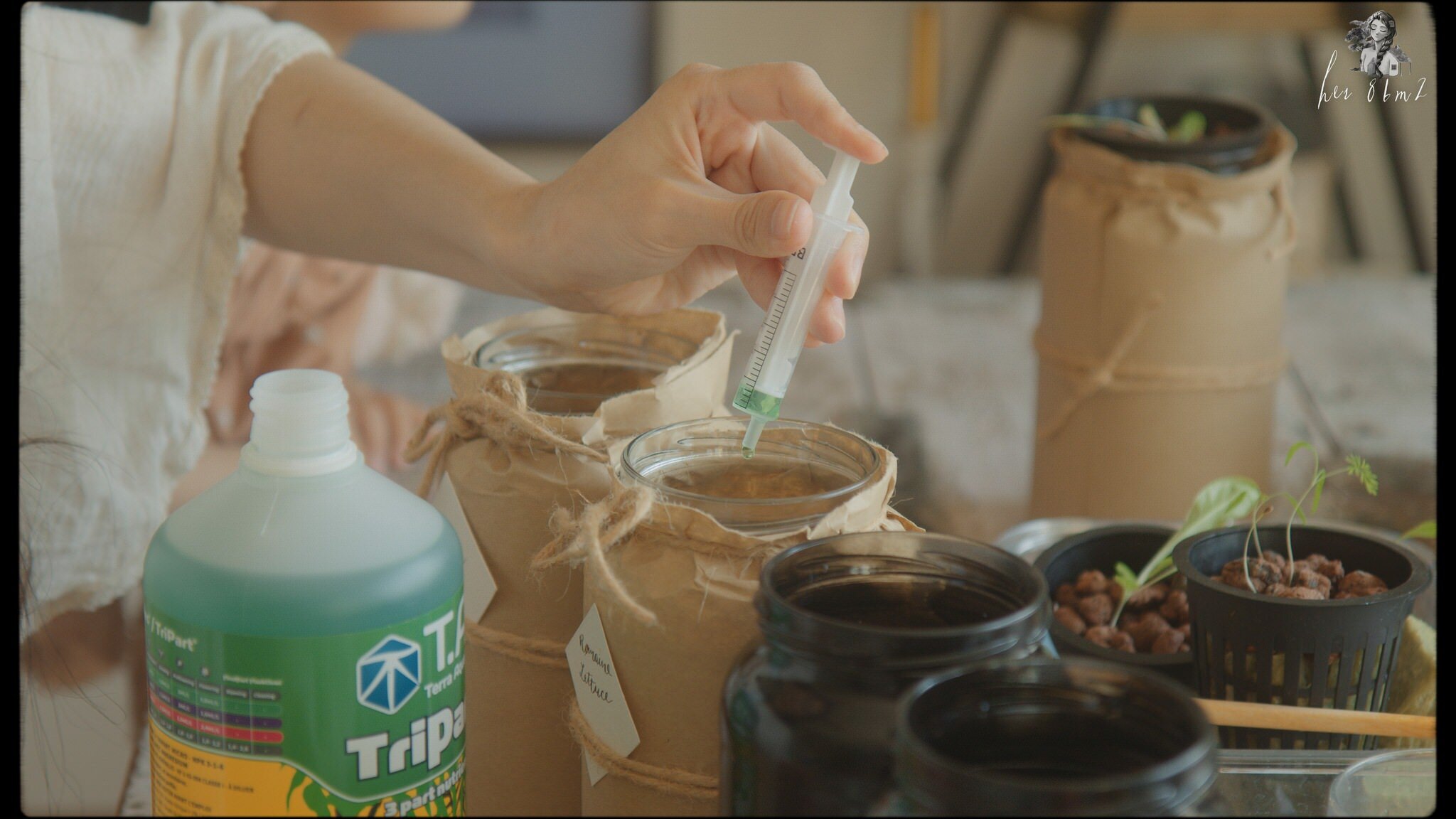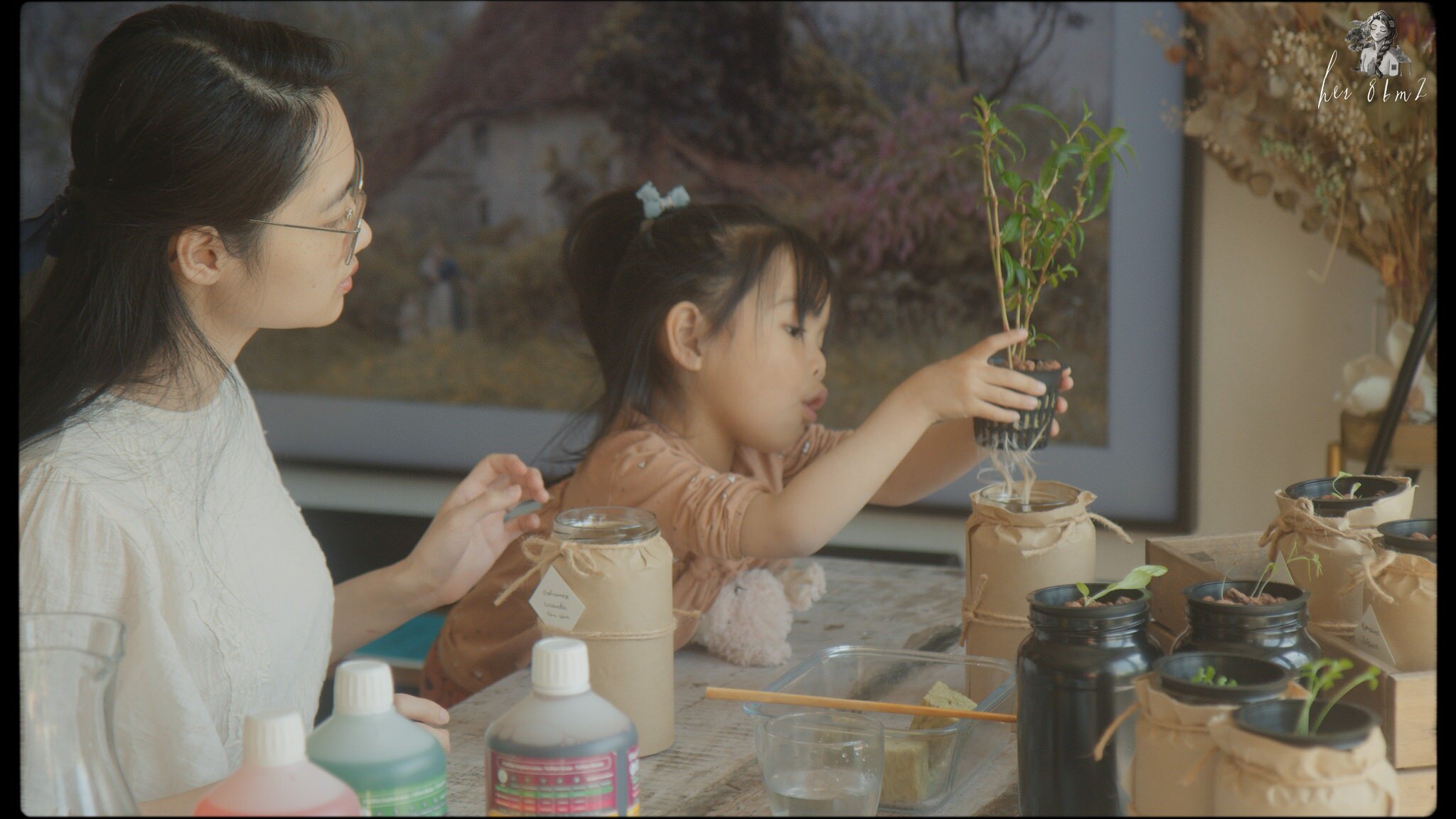Growing Vegetables in Glass Jars - Hydroponic Gardening
(Tiếng Việt bên dưới)
The strange weather of this year’s spring has introduced me to hydroponic gardening - because I haven’t been able to transplant my plants to the outdoors, I tried to figure out a way to produce vegetables that is not weather dependent.
Following the video #41, today I'm going to show you the most simple hydroponic setup with a glass jar.
This is a passive hydroponic system - it does not require electricity.
You can use any kind of reservoirs that you have, not just glass jar.
For the hydroponic system to be productive and effective, the plant must be adequately lit and the surrounding area must have temperatures of 18-24 °C. Both requirement are easy to achieve in indoor gardening.
Suitable plants
This method can work with many plants, from lettuce to flowering plants like tomatoes and potatoes, anything is possible. However, leafy vegetables are best because large, flowering plants can often suffer from a lack of oxygen in the root zone. The leafy vegetables and herbs, on the other hand, require significantly less oxygen.
Click on the link below to see the most suitable vegetables for hydroponic in general.
Germinating Seed
There are many ways to germinate seeds for hydroponic system.
I soak a rockwool cube in water for a few minutes and place 2-3 seeds to increase the germinating rate. Cover it with a transparent lid with air vent to keep the moisture. Misting if it gets dry. The rockwool can be used directly as substrate afterward.
Full disclaimer: rockwool is the best substrate for growing hydroponics but it's not really an environmental friendly material so I'm still struggling to find a good alternative. At least for now I keep reusing them over and over again so I only have to buy it once. Feel free to let me know a better option in the comment :)
Once they're sprouted, choose the strongest plant and transplant them into a net cups with clay pebbles or perlite on top to help holding moisture.
The choice of jar
How big the jar is depends on the plants you're planning to grow, I find 1-2L jar the sweet pot for lettuce or herbs. A wide jar is better because the water level does not sink as quickly and the roots are better supplied with the nutrient solution.
Create a water level indicator. The jar should only be filled high enough with nutrient solution to allow the bottom of the rockwool to wick water.
Cover it with some sort of shading to keep light out and prevent algae. You can spray with black paint or use kraft paper.
How to mix the nutrients solution
You CAN'T use normal soil fertilizer or compost for hydroponic system. At the moment I use a 3-part hydroponic fertilizer - you can find a link to buy every hydroponic tools I use at the end of this blogpost.
I also 'talked' about mixing the nutrients solution for hydroponics in the video #41 below so give it a look ;)
Simply put, the pH and the EC value are the most important thing in hydroponics. Every plant has an unique ideal pH and EC value range to thrive in. You can either measure those values with Litmus test stripes or a digital meter.
Always start at a very low EC (0.4-0.6) for young plants, and seedling or cuttings. Then raise the EC gradually to its ideal range, as the plant grows bigger. Since lettuce and most of herbs have a very low ideal EC range and our tap water has an EC value of 0.4-0.5, I usually start the nutrients solution with water only.
Measure the EC value and adjust it if necessary. If the EC is too high, add more water. If it's too low, add more nutrient.
Let the nutrient solution sit for 10 minutes.
Measure the pH and adjust it with pH regulator if necessary.
You can also click on the link below to see the pH and EC value of the most popular vegetables.
Care
The first few days you should check whether the rock wool is still damp. As soon as the first roots peek out from below and hang in the nutrient solution, I can stop doing this.
As the plants drink from their small reservoir and the water level drops, an air gap grows between the nutrient solution and the plant itself, allowing the plant to breathe without oxygenating the reservoir. Simple, but genius!
Whenever add new nutrient solution, don't fill the jar all the way up so the root system has enough gap to get oxygen.
Maintenance
Once a month I change water completelyand rinse off the growing medium to minimize the accumulation of plant waste in it.
Then I clean the jar with hot water and citric acid.
In between changes, I will check the pH & EC regularly and if necessary, adjust them accordingly.
Remember to prune the plants and trim their roots regularly to keep the growing environment in control.
I put my jars in the window and generally there will be sufficient light for plant growth. But if you have a dark apartment you may need a grow light.
Harvest
Depending on the light intensity, nutrient composition and type of plant, the herbs or leafy vegetables can usually be harvested after three to four weeks.
Harvest regularly to increase the yield!
HYDROPONIC TOOLS / Đồ nghề trồng rau thuỷ canh:
Glass Jars: https://amzn.to/3xVIzoW
Net Pot: https://amzn.to/3wNq44Z
ph Meter / Máy đo pH: https://geni.us/ph20meter
EC Meter / Máy đo EC: https://geni.us/ec20meter
Hydroponic fertilizer / Dinh dưỡng thuỷ canh: https://geni.us/hydrofertil
iDoo Hydroponic System: https://geni.us/idoo
Aerogarden Hydroponic System: https://geni.us/aerogardenbounty
Craft Paper: https://amzn.to/3irhWC4
Thời tiết ẩm ương của mùa xuân năm nay đã đưa mình đến với thủy canh - vì không thể đưa cây ra ngoài trời nên mình cố gắng học thêm các cách trồng rau mà không phụ thuộc vào thời tiết.
Tiếp nối sau video #41, hôm nay mình sẽ hướng dẫn mọi người cách trồng rau thủy canh đơn giản nhất - chỉ với một bình thủy tinh!
Đây là hệ thống thủy canh thụ động - không cần điện.
Bạn có thể dùng bất kỳ loại bình chứa nào mình có, không chỉ riêng bình thủy tinh.
Để hệ thống thủy canh năng suất và hiệu quả, cây cần được chiếu sáng đầy đủ và dung dịch dinh dưỡng có nhiệt độ từ 18-24 °C. Cả hai yêu cầu đều dễ dàng đạt được khi làm vườn trong nhà.
Loại cây phù hợp
Thuỷ canh phù hợp với nhiều loại cây, từ xà lách đến cây có hoa như cà chua và khoai tây, và nhiều loại cây khác. Tuy nhiên, các loại rau ăn lá là tốt nhất vì những cây có hoa, lớn thường có thể bị thiếu oxy ở vùng rễ. Còn các loại rau ăn lá và rau thơm cần ít oxy hơn đáng kể.
Click vào link này để xem các loại rau trồng thủy canh phù hợp nhất nhé.
Gieo hạt
Có nhiều cách khác nhau để gieo hạt cho thủy canh.
Mình ngâm một cục bông khoáng trong nước vài phút và gieo 2-3 hạt để tăng tỷ lệ nảy mầm. Đậy bằng nắp trong suốt có lỗ thoát khí để giữ độ ẩm. Phun nước mỗi khi thấy khô. Sau đó, bạn có thể dùng thẳng bông khoáng để làm bầu "đất" cho cây.
Nhưng mình cũng cần phải nói thêm: bông khoáng là một trong các vật liệu tốt nhất để trồng thủy canh nhưng nó không thực sự là vật liệu thân thiện với môi trường nên mình vẫn đang cất nhắc để tìm một giải pháp thay thế tốt hơn. Ít nhất là bây giờ mình tiếp tục sử dụng lại chúng nhiều lần nên tôi chỉ phải mua một lần lúc đầu thôi. Nếu bạn biết một lựa chọn tốt hơn thì cho mình biết trong phần bình luận nha :)
Sau khi hạt nảy mầm, chọn cây khỏe nhất và chuyển vào cốc lưới có rải sỏi đất sét hoặc đá trân châu lên trên để giúp giữ ẩm.
Chọn bình thuỷ tinh nào
Chọn bình lớn nhỏ như nào tùy thuộc vào loại cây bạn định trồng, mình thấy bình 1-2L rất hợp lý cho xà lách hoặc rau thơm. Bình đáy rộng sẽ tốt hơn vì mực nước không giảm quá nhanh và rễ được cung cấp dung dịch dinh dưỡng tốt hơn.
Vẽ vạch báo nước.
Chỉ nên đổ dung dịch dinh dưỡng vừa đủ đến đáy phần bông khoáng.
Che kín bình thuỷ tinh để giữ ánh sáng đề phòng tảo mọc. Bạn có thể xịt sơn đen hoặc sử dụng giấy kraft bọc bình.
Cách pha dung dịch dinh dưỡng
Bạn KHÔNG ĐƯỢC dùng phân bón cho đất thông thường hoặc phân hữu cơ cho thủy canh.
Hiện tại mình sử dụng phân bón thủy canh 3 phần - bạn có thể tìm thấy link mua mọi dụng cụ thủy canh mà mình sử dụng ở cuối blogpost này.
Mình cũng đã 'nói' kĩ về cách pha dung dịch dinh dưỡng cho thủy canh trong video #41 nên nhớ xem qua nha ;)
Nói một cách đơn giản, giá trị pH và EC là điều quan trọng nhất trong thủy canh. Mỗi loại cây đều có một phạm vi pH và EC lý tưởng để phát triển khoẻ mạnh.
Luôn bắt đầu ở EC thấp (0,4-0,6) đối với cây non, cây con hoặc cành giâm. Sau đó, nâng EC dần dần đến phạm vi lý tưởng của cây, khi cây ngày một lớn.
Vì xà lách và hầu hết các loại rau thơm có phạm vi EC lý tưởng rất thấp và nước máy nhà mình có giá trị EC từ 0,4-0,5, mình thường bắt đầu dung dịch dinh dưỡng chỉ với nước lã.
Đo giá trị EC và điều chỉnh nếu cần. Nếu EC quá cao, đổ thêm nước. Nếu EC quá thấp, bổ sung thêm chất dinh dưỡng.
Để dung dịch dinh dưỡng tan đều trong 10 phút.
Đo pH và điều chỉnh tăng giảm nếu cần.
Bạn cũng có thể ấn vào link này để xem giá trị pH và EC của các loại rau phổ biến nhất.
Chăm cây
Những ngày đầu tiên bạn nên kiểm tra xem bông khoáng còn ẩm không. Ngay sau khi những chiếc rễ đầu tiên ló ra từ bên dưới và lơ lửng trong dung dịch dinh dưỡng, cây sẽ ổn thôi.
Khi cây hút nước từ bình, mực nước sẽ giảm xuống, tạo ra khoảng trống không khí giữa dung dịch dinh dưỡng và cây, cho phép rễ cây thở mà không cần sục oxy cho bình nước. Đơn giản, nhưng hiệu quả!
Bất cứ khi nào thêm dung dịch dinh dưỡng mới, đừng lấp đầy bình để hệ thống rễ có đủ khoảng trống để lấy oxy.
Bảo trì
Mỗi tháng một lần, mình thay nước hoàn toàn và rửa sạch bầu rễ để giảm thiểu sự tích tụ khoáng chất trong đó.
Sau đó làm sạch bình bằng nước nóng và axit xitric.
Giữa các lần thay nước hoàn toàn, mình kiểm tra pH & EC thường xuyên và nếu cần, điều chỉnh cho phù hợp.
Nhớ cắt tỉa cây và tỉa rễ thường xuyên để kích cây phát triển mạnh hơn.
Mình để những chiếc lọ ở cửa sổ và nhìn chung sẽ luôn có đủ nắng cho sự phát triển của cây. Nhưng nếu nhà bạn khuất nắng, có thể bạn sẽ cần thêm đèn LED trồng cây.
Thu hoạch
Tùy thuộc vào cường độ ánh sáng, thành phần dinh dưỡng và loại cây, các loại rau thơm hoặc rau ăn lá thường có thể thu hoạch sau ba đến bốn tuần.
Nhớ thu hoạch thường xuyên để kích cây lớn nhanh và thu hoạch được nhiều hơn.
SUPPORT ME SO I CAN CREATE MORE QUALITY CONTENT / ỦNG HỘ MÌNH LÀM TIẾP NHỮNG NỘI DUNG NHƯ NÀY:
https://paypal.me/ThuThuyDao
https://www.patreon.com/her86m2
PHOTO EDITING PRESETS FOR LIGHTROOM / PRESETS CHỈNH ẢNH:
STAY CONNECTED / KẾT NỐI VỚI MÌNH:
Website: https://www.her86m2.com
Facebook: https://www.facebook.com/her86m2
Instagram: https://www.instagram.com/thuydao__/




